
Tokyo's foreign residents are bringing the flavors of their respective homelands to their adopted home, enriching the Japanese capital with their thriving restaurants and helping them integrate in the metropolis.

AHINAMA
Higashiueno, Taito-ku

SAMARKAND TERRACE
Takadanobaba, Shinjuku-ku

Soul Food House
Azabujuban, Minato-ku

Diner Vang
Miyoshi, Koto-ku

Bistrot Quatre Avril
Nishigotanda, Shinagawa-ku

Babusya REY
Kichijojihoncho, Musashino-shi

Turkish Cafe & Bar Dogal
Nakanobu, Shinagawa-ku

APSARA
Nishiwaseda, Shinjuku-ku

de Afrique
Okusawa, Setagaya-ku
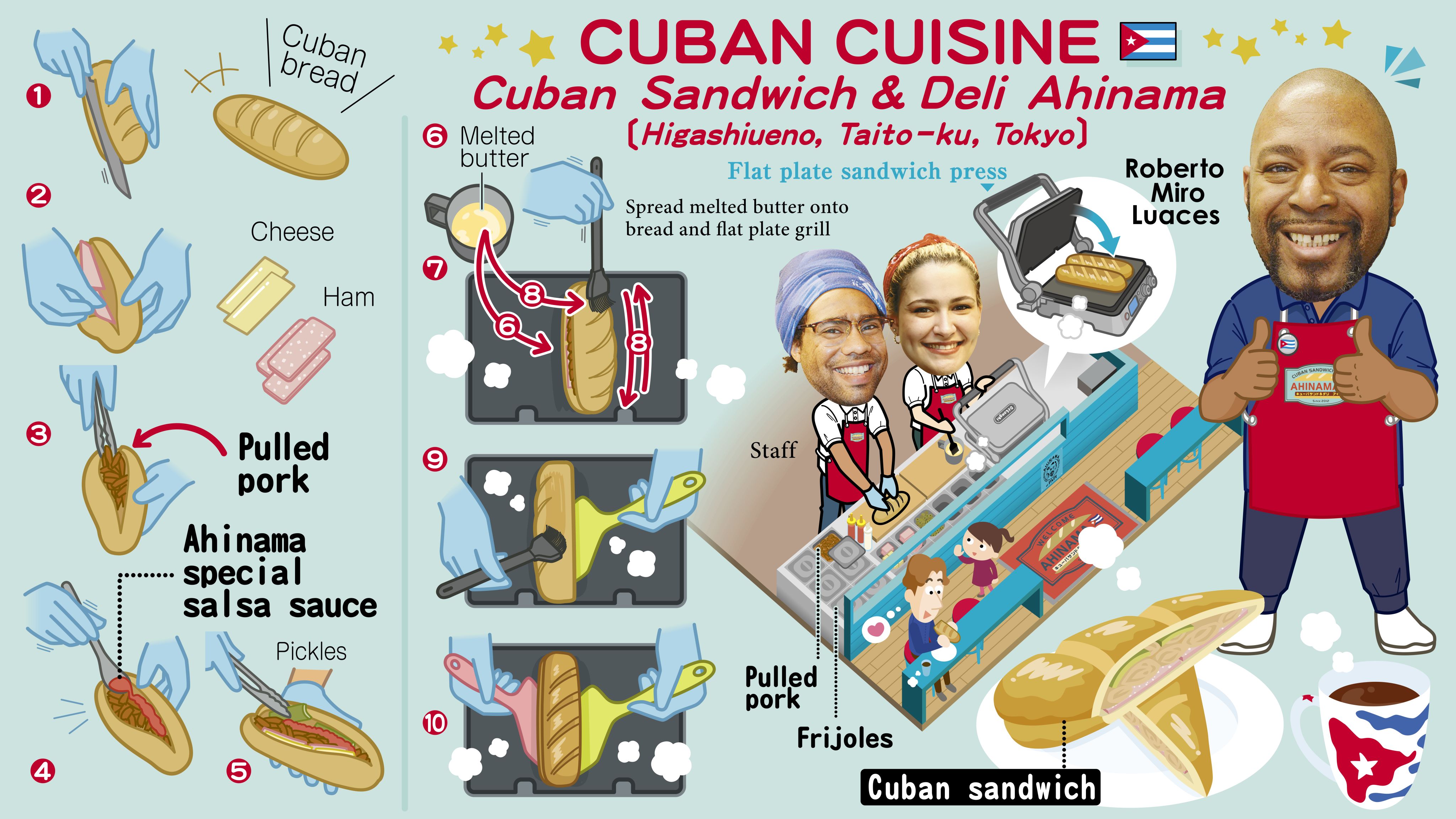
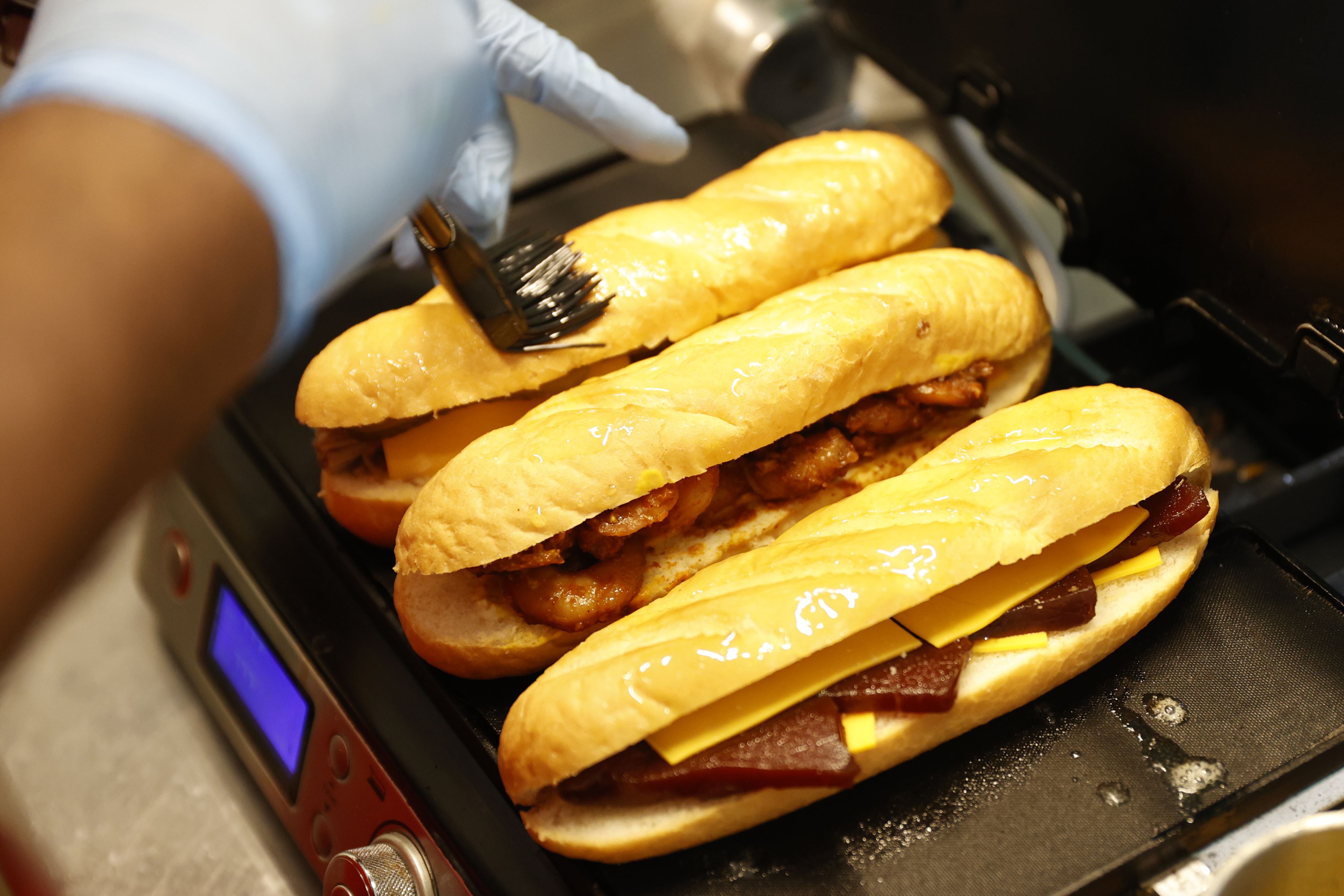
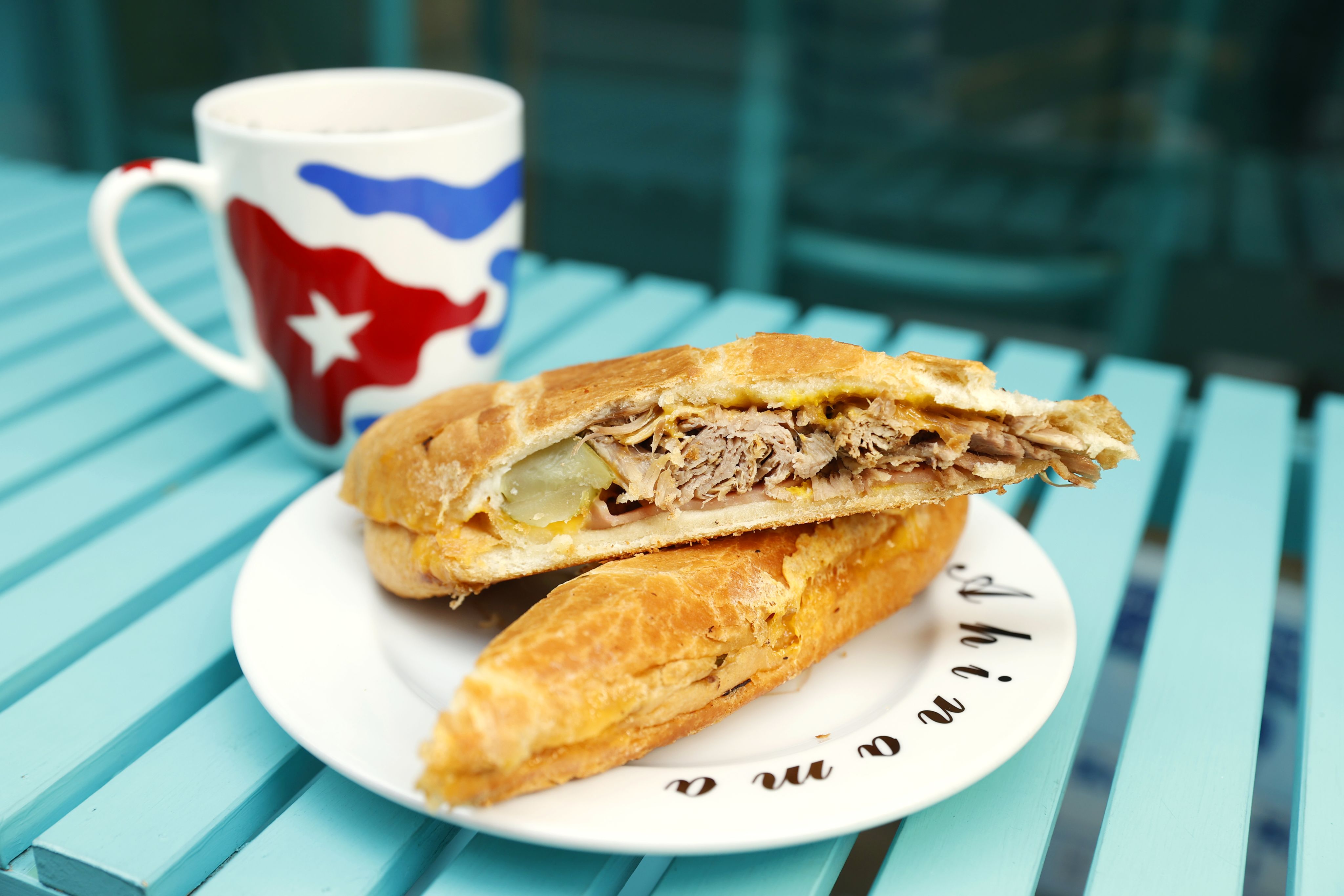

Inside the eye-catching turquoise entrance of Ahinama Ueno in Taito district's Higashiueno, owner Roberto Miro Luaces -- clad in a bright red apron -- is busy baking and serving Cuban sandwiches.
Ahinama offers a wide variety of fillings to heap into the soft fluffy Cuban bread, such as beef, chicken, ham and shrimp. The most popular choice on the menu is El Cubano, which features a plentiful serving of pulled pork.
The sandwiches are made fresh upon order. Luaces slices open a Cuban loaf and toasts it in a special grill that makes the bread crispy all over.
After coming to Japan in 2001, Luaces worked as a professional dancer for about 10 years as he has loved to dance since a child and enjoyed entertaining others. "I've performed on stages around the country: Sapporo, Sendai, Niigata, Nagoya, Kyoto, Okinawa and so on."
"Decide on what you want to do and go explore different experiences," he says. "Life is fascinating as good things and bad all come along the way."
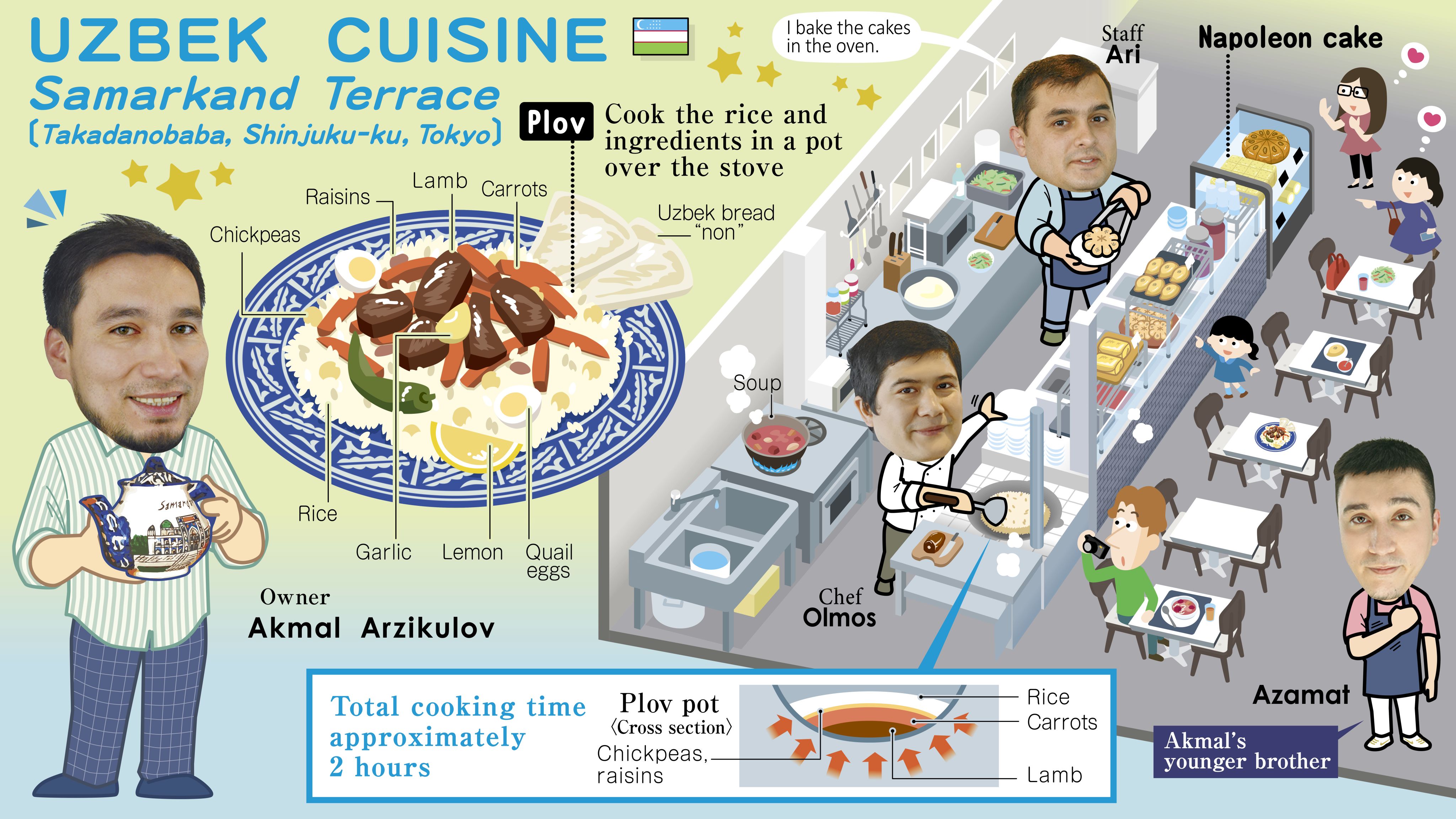
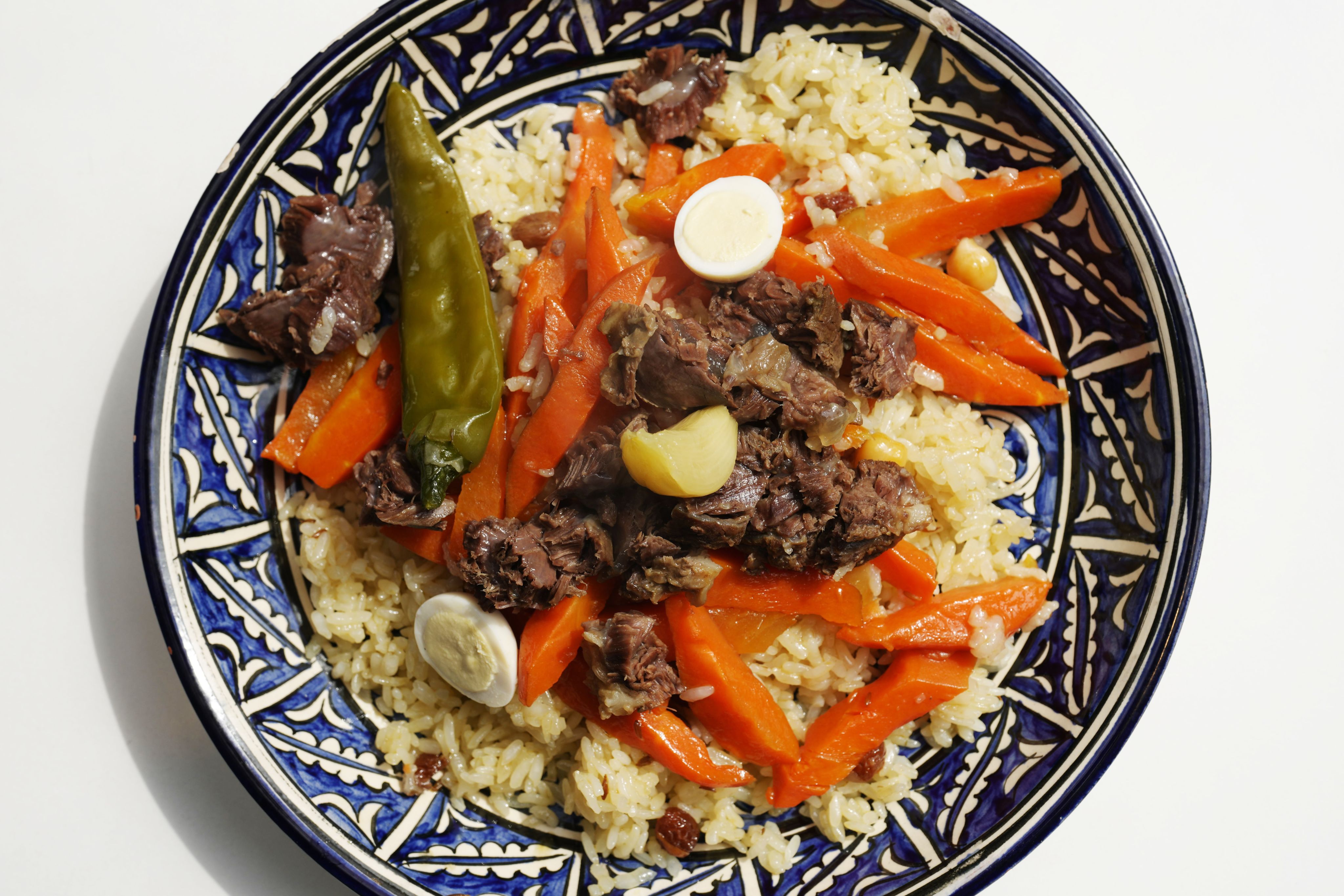
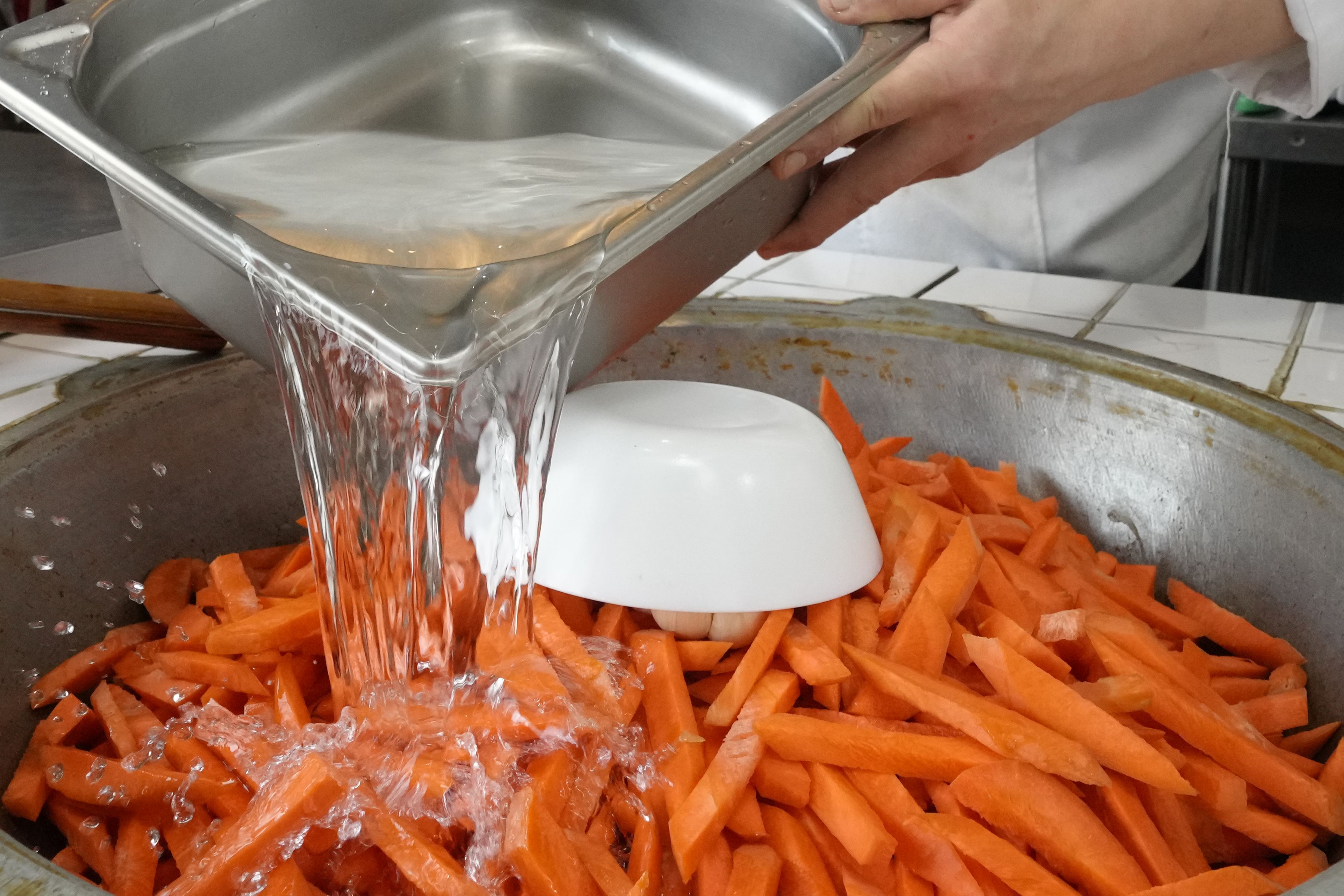
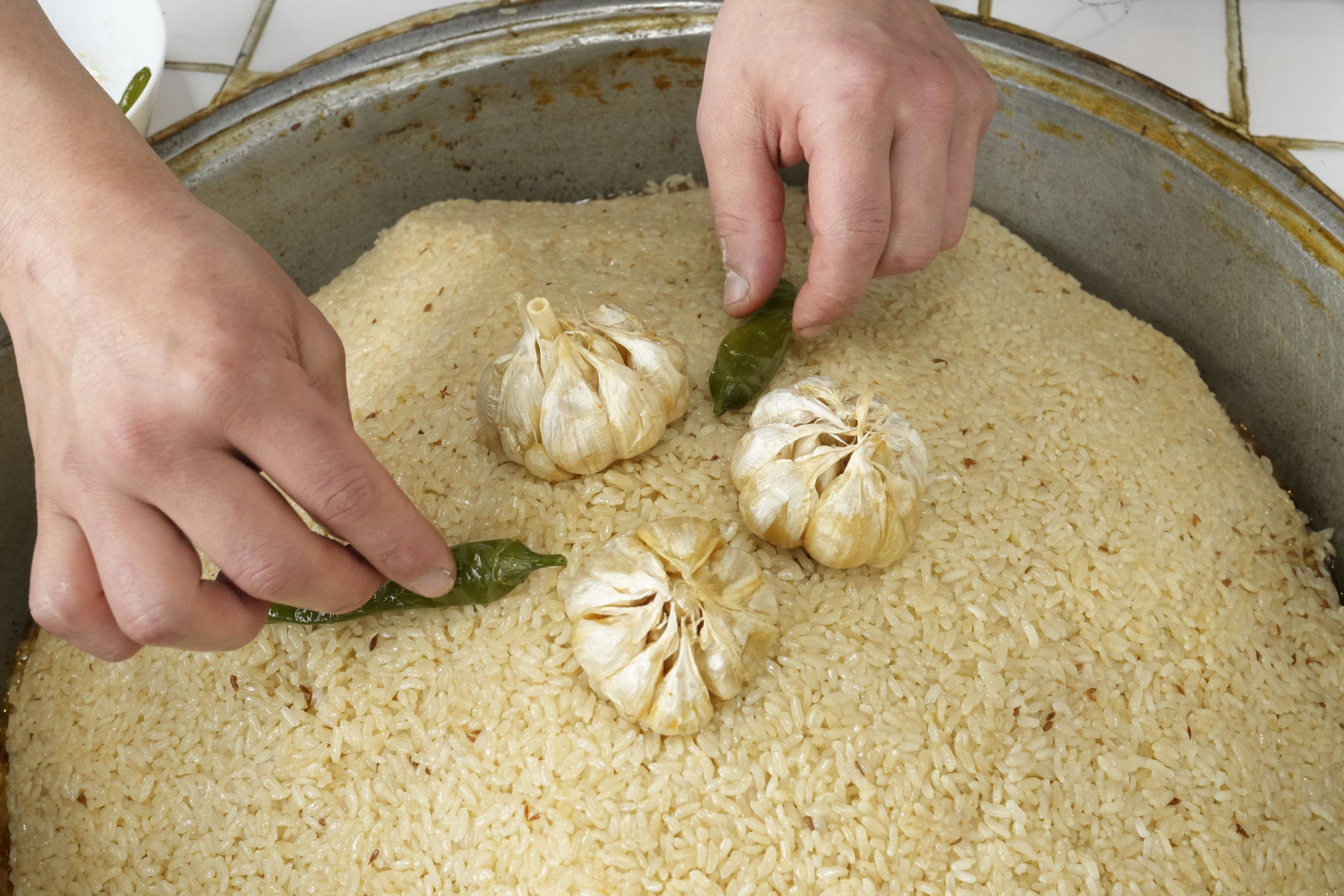
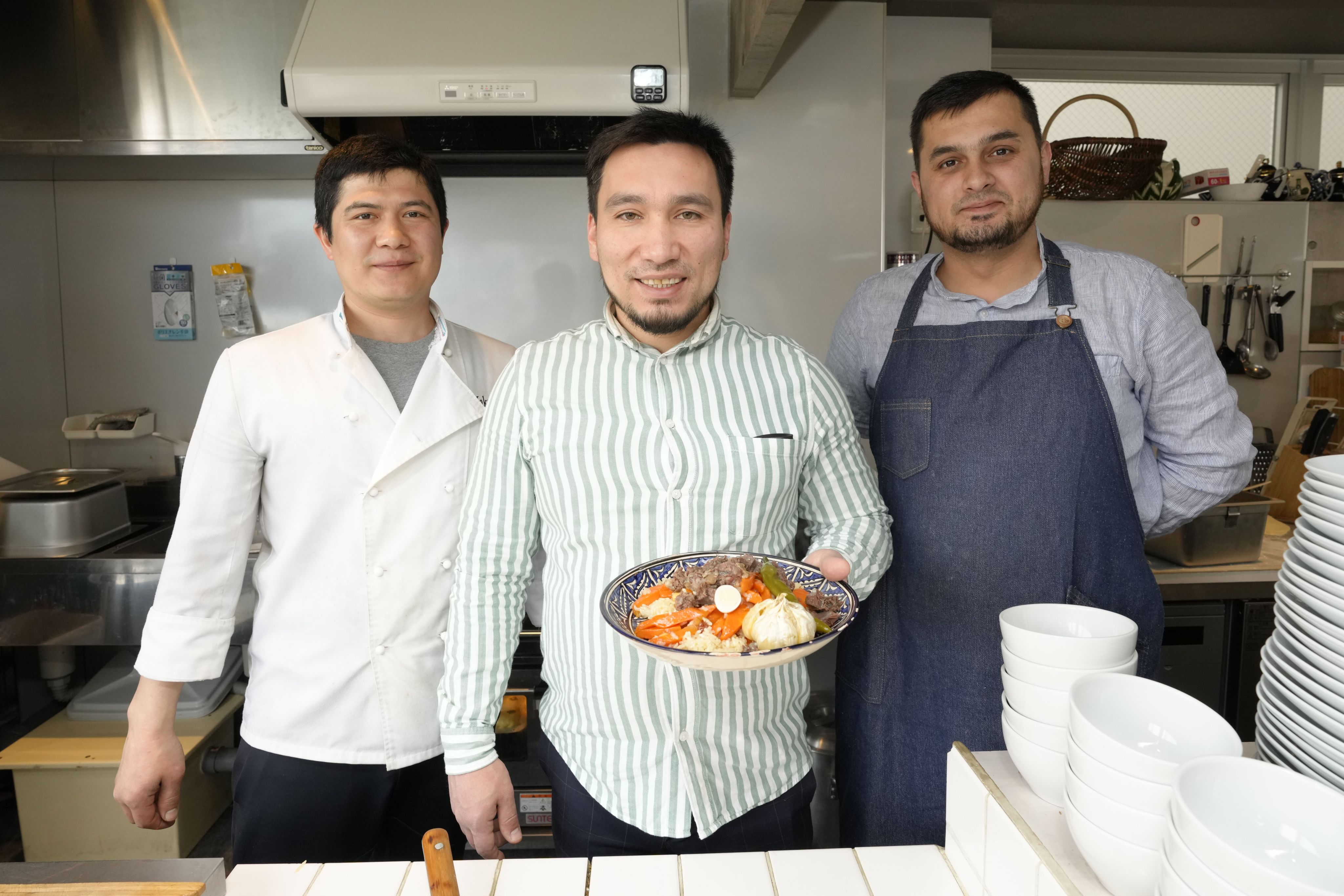
Trying Uzbek plov, a delicious rice and lamb dish on the menu at Samarkand Terrace in Shinjuku district's Takadanobaba, for the first time proves to be a pleasant surprise.
"With six kilograms each of meat, carrots and rice, we can make 60 servings right in here," owner Akmal Arzikulov explains as he shows off the restaurant's gigantic plov pot.
Chef Olmos Xoja starts the day's preparations at 8 a.m. Once the ingredients are ready, he heats flaxseed oil and sunflower oil in the special pot and then puts in 12 pieces of lamb about the size of an adult's fist and adds onions and carrots on top.
While waiting for the meat and vegetables to cook, he chops coriander and samples the soup to adjust the taste. At around 10:30 a.m., he adds rice grains into the pot with a long spatula and then covers it with a lid.
Meanwhile, in the oven, samsa, a flaky pastry dough wrapped around meat and vegetables, is being baked to perfection, filling the eatery with its appetizing aroma.
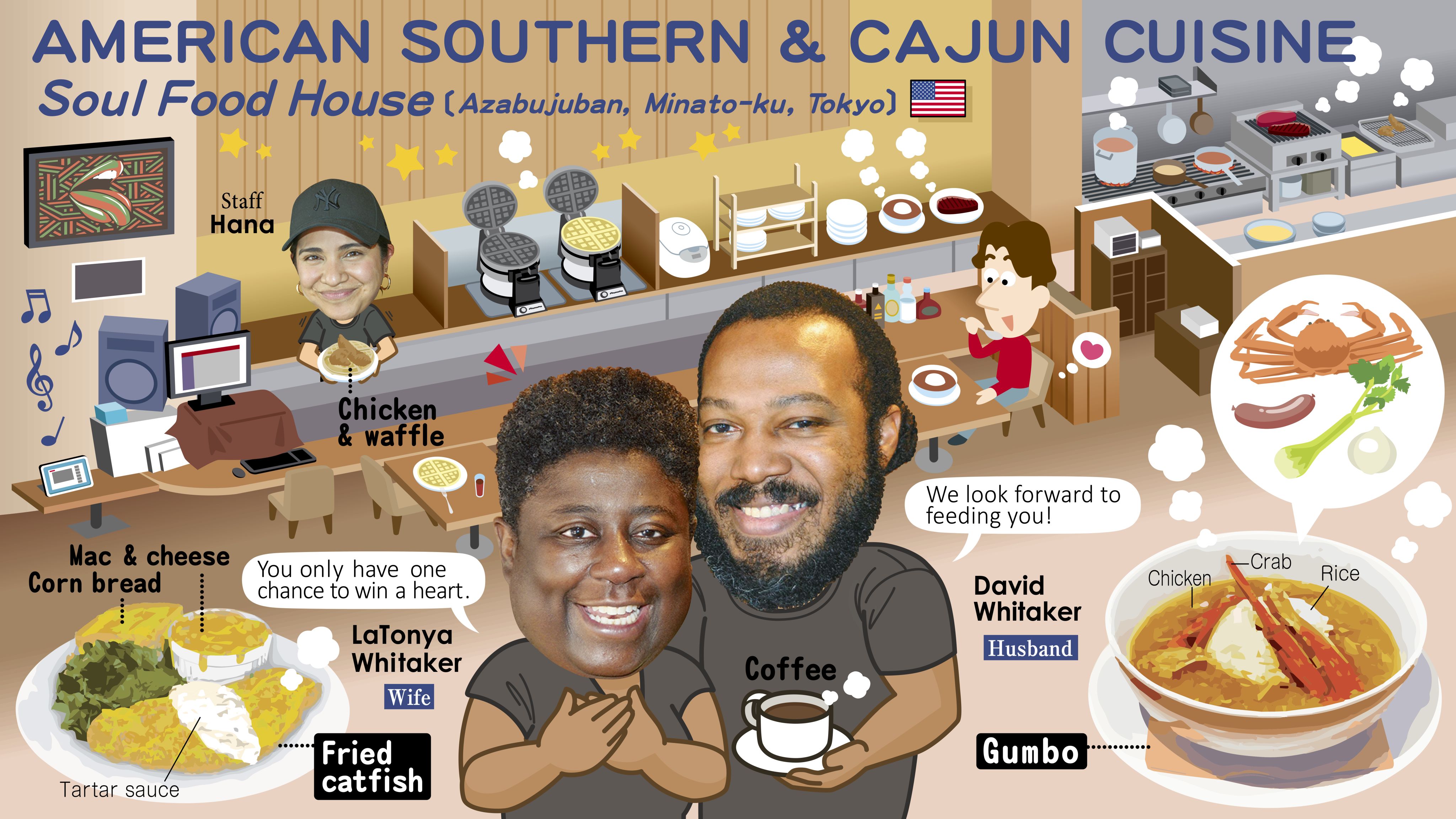
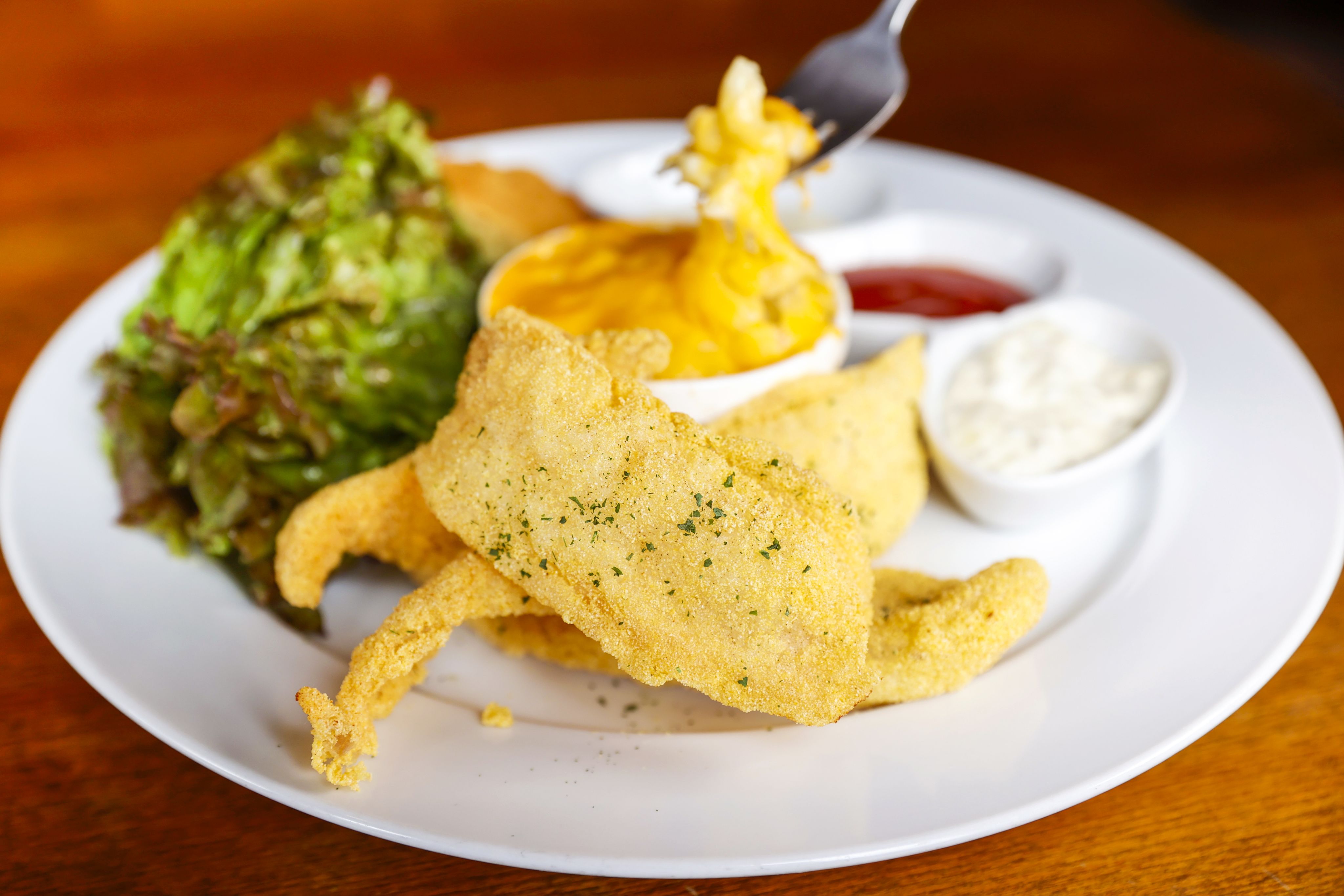

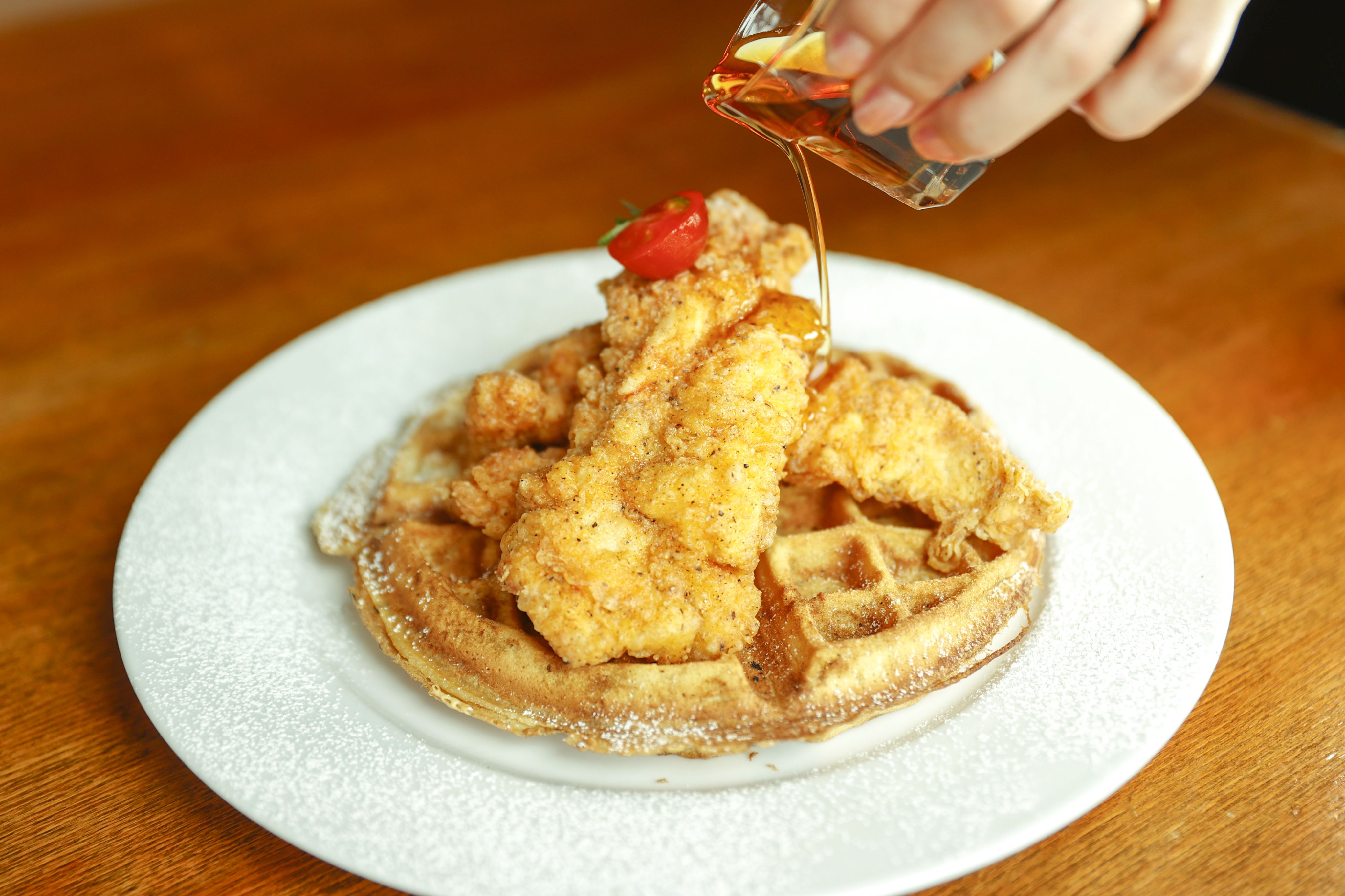
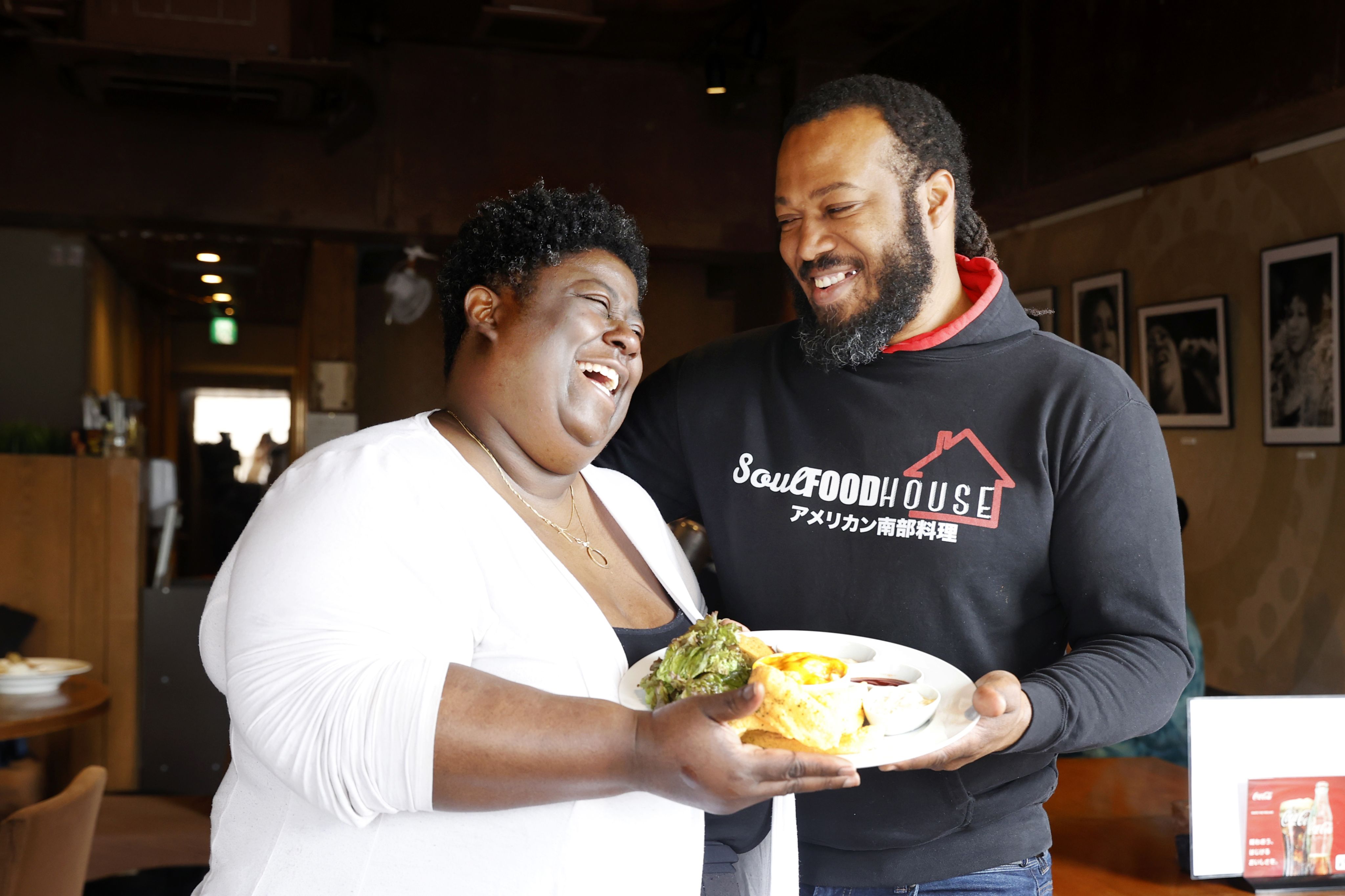
Fried catfish, golden and crispy on the outside and fluffy and flavorful on the inside, is a popular item on the menu at Soul Food House, which serves authentic American Southern and Cajun cuisines in Minato district's Azabujuban.
Owner and chef LaTonya Whitaker chats with patrons as music wafts around the restaurant. Her husband David Whitaker joins in and laughter inevitably erupts.
LaTonya says she learned how to cook gumbo when she was living in Louisiana as a college student. The thick stew, slightly spicy and topped with crab legs, goes perfectly with rice, she says.
The stew also features chicken, sausage and celery, but what's most important is the roux, LaTonya says. Even if the best ingredients are used, it's no good if the roux isn't done right.
It takes about 10 minutes of diligent stirring of flour and oil in the pot. If even the slightest bit is burned, the process has to be started over from scratch because it will spoil the taste, she says.
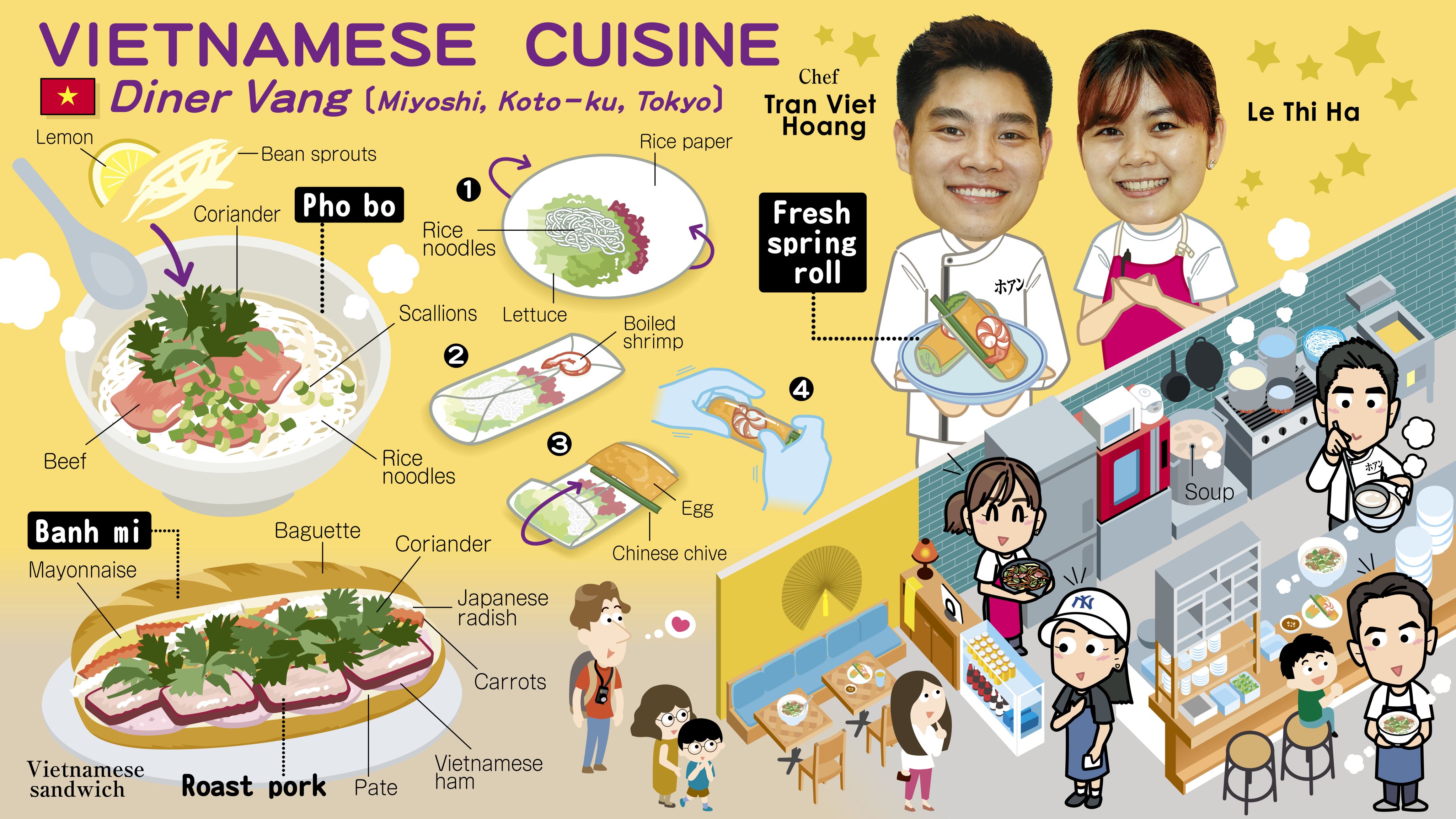
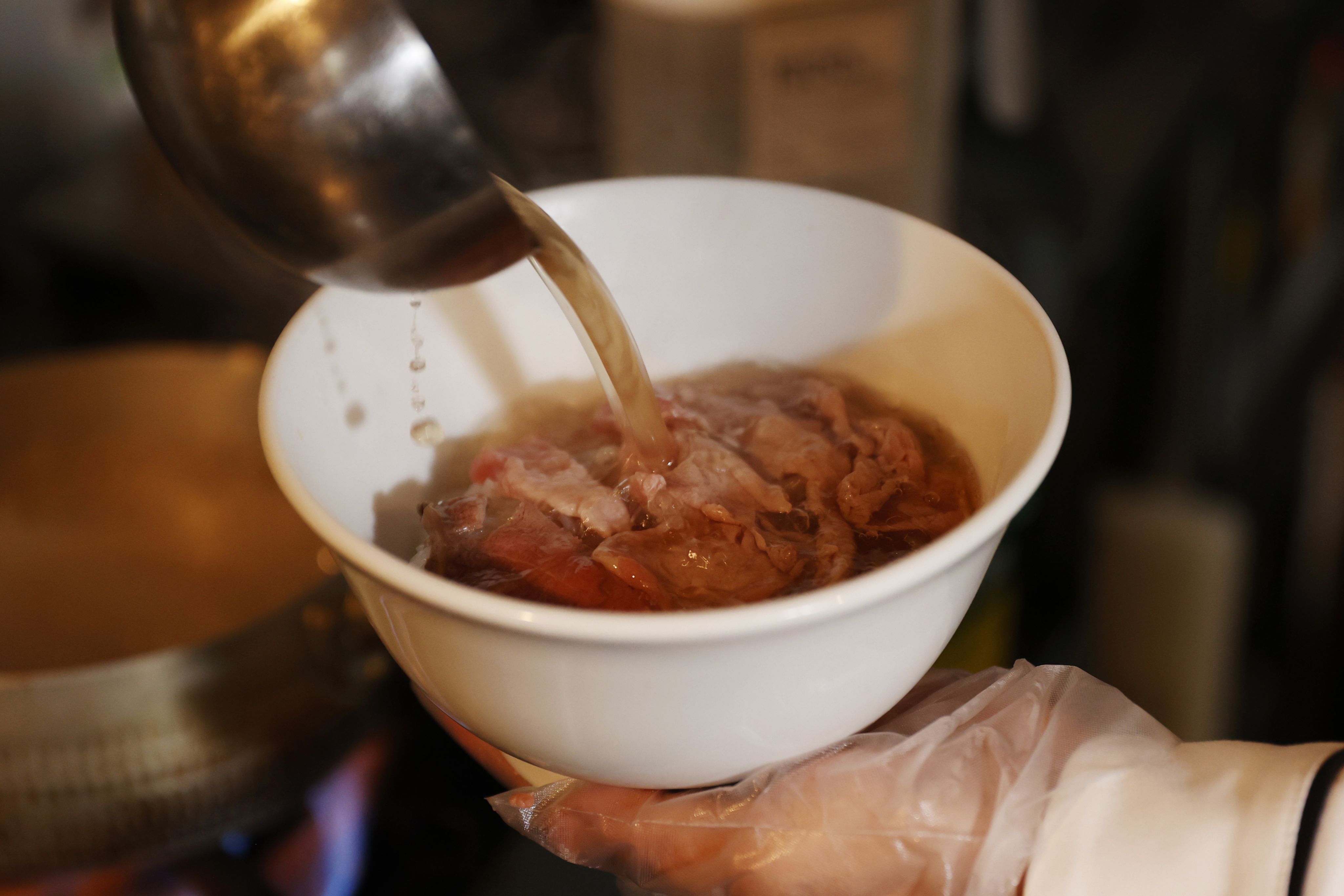

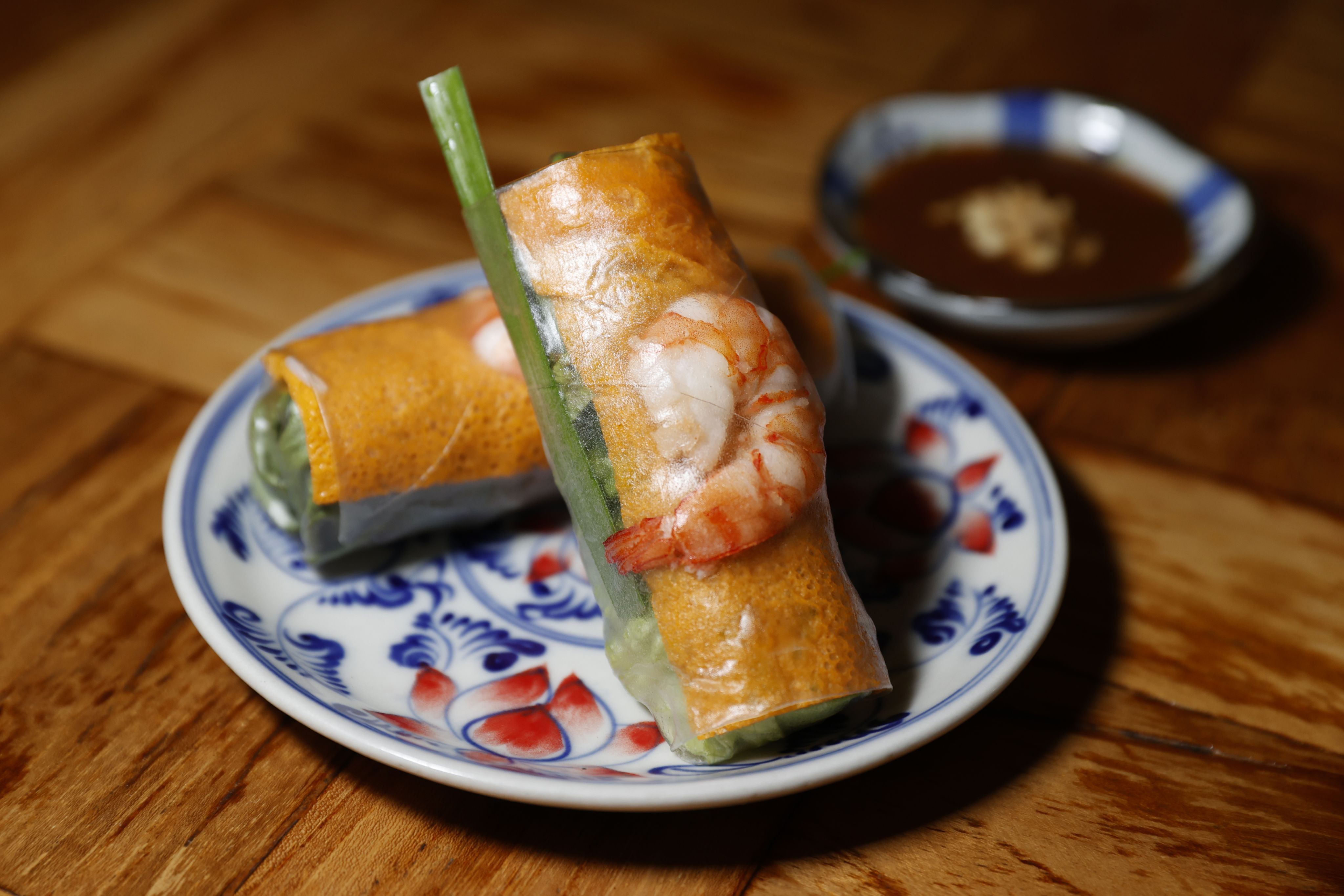
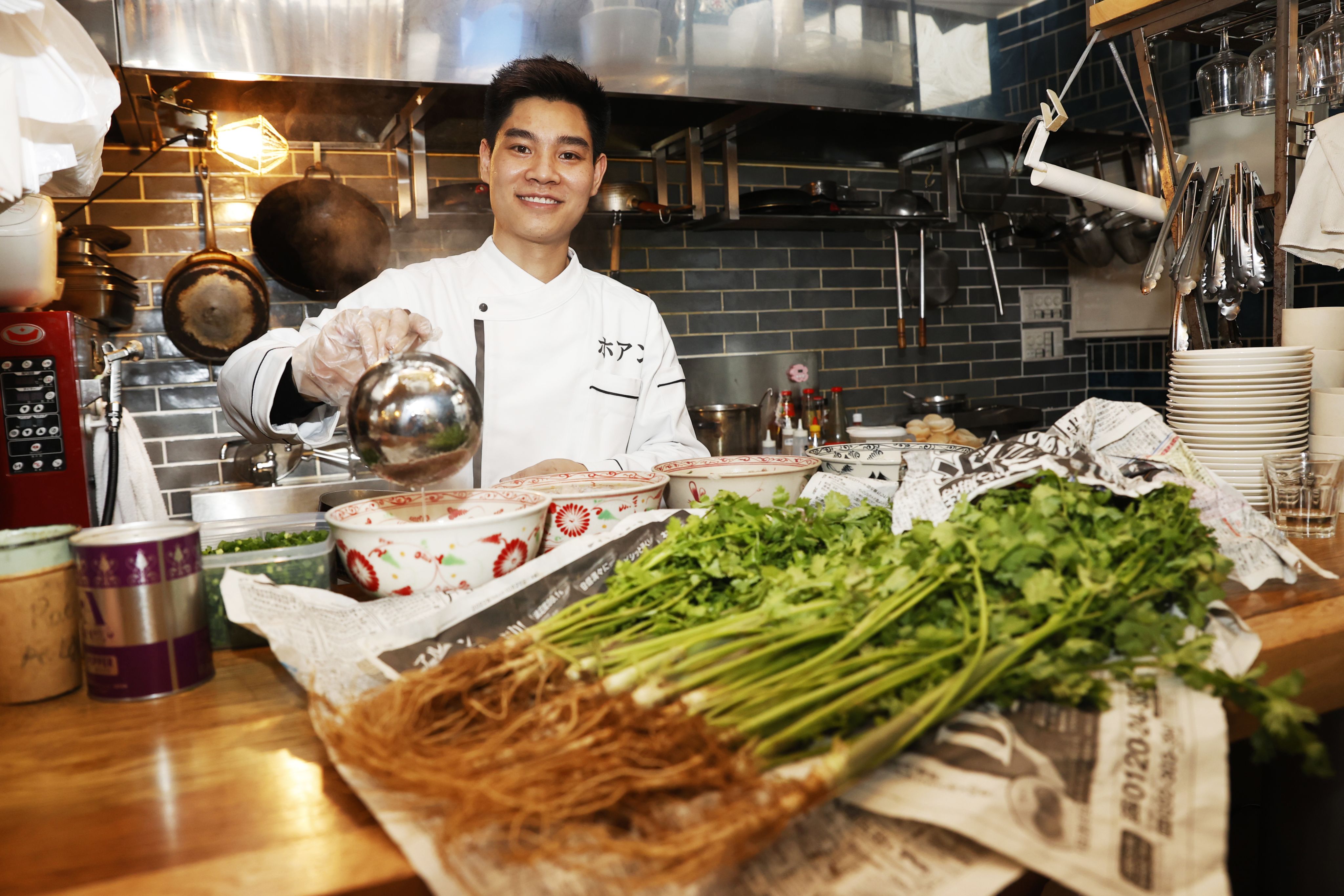
At Diner Vang in Miyoshi in Koto district, chef Tran Viet Hoang prepares the pho bo by pouring hot beef bone broth into a deep bowl filled with rice noodles and topped with thin slices of raw beef.
Manager Le Thi Ha explains that the noodle soup, made with the broth, onions, cinnamon, star anise and other ingredients, "takes 24 hours to make."
The signature sauces used in other dishes on the menu, such as Vietnamese fresh spring rolls and banh mi, are also made from scratch.
In addition to Vietnamese soy sauce and Sate Tom chili oil, the restaurant also uses Japanese sugar, vinegar and other condiments.
"As these come in different levels of sweetness and sourness (from Vietnamese products), we make adjustments to the recipes we learned in Vietnam," says Le, who hails from Thanh Hoa province in northern Vietnam.

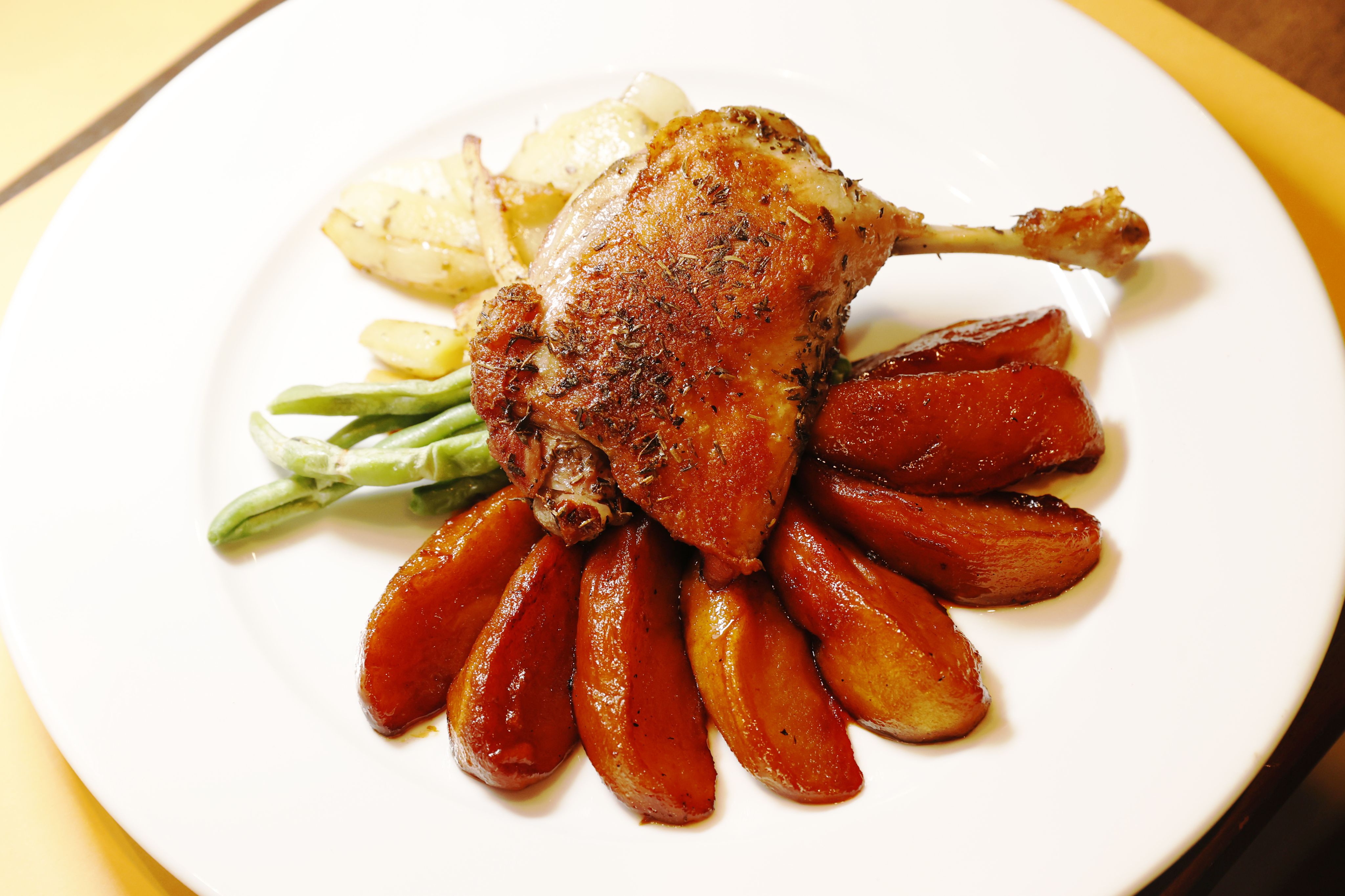
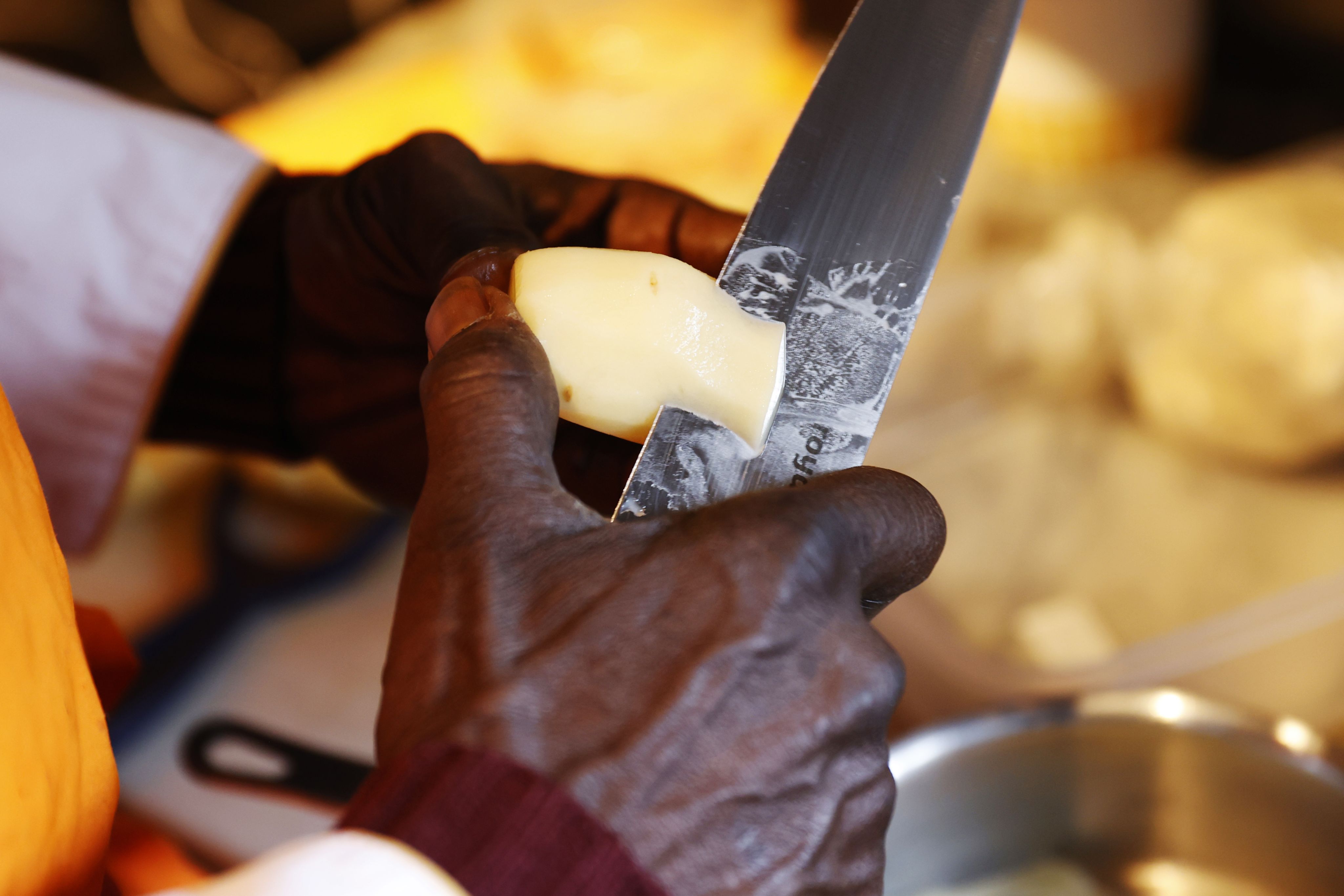
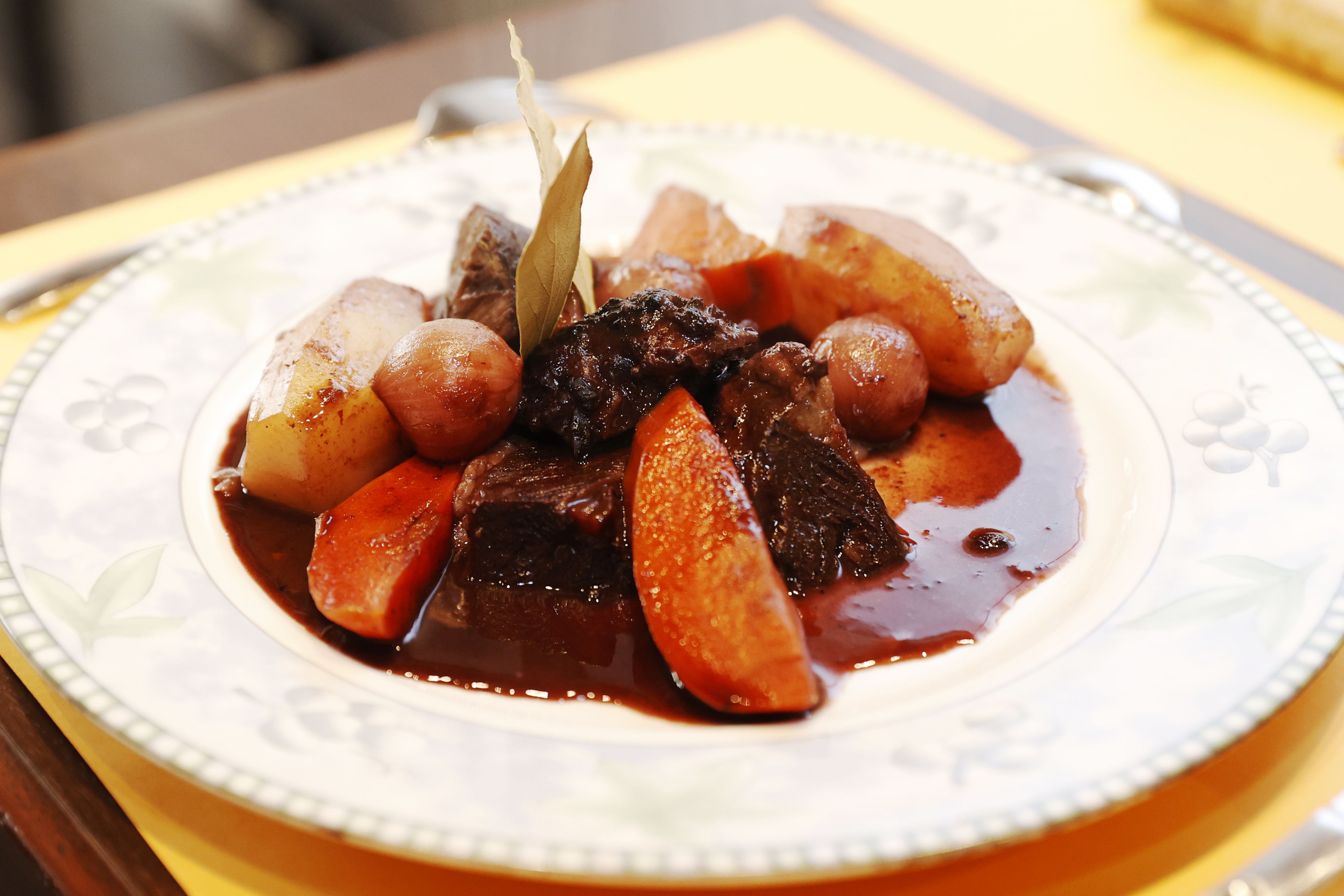
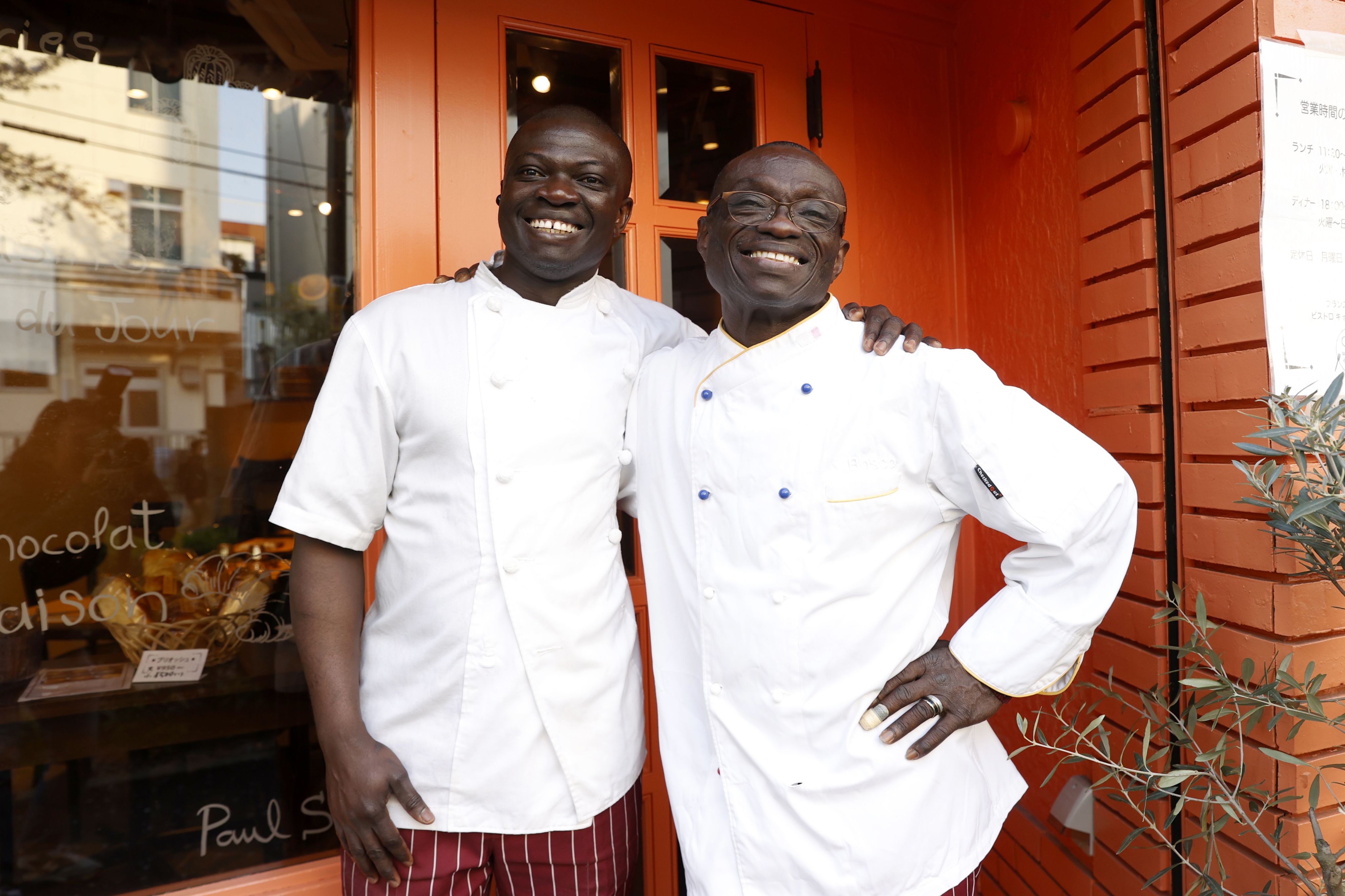
Clad in his white chef's shirt and signature orange apron, Jean Bosco is always a cheerful beam of sunshine for patrons when they visit Bistrot Quatre Avril, a French restaurant in Shinagawa area's Nishigotanda that specializes in cuisine from the south of the European nation.
Bosco, who was born and raised in Toulouse in southwestern France, says that when he was in high school, he was impressed by a chef he saw on TV. "I told my mother I wanted to go to culinary school and she immediately agreed to it," he says.
In the kitchen of the restaurant named in honor of his daughter's birthday, Bosco cooks apples to serve with duck confit, paying careful attention to how the color changes. For the confit de canard, he cooks the meat for four hours in duck fat heated to 60 C and then puts that into the oven so it becomes crispy on the outside and soft in the inside.
Bosco says the steps of his cooking are set down to the fine details, like how many minutes in the oven and what to use in the sauce. "The meat gets tough if you cook it for too long, but it's undercooked if it's not long enough. You can't make good food if you don't have all this knowledge."
"Sauces are the most important thing in French cuisine. I only test taste my sauce once. I don't do it over and over."
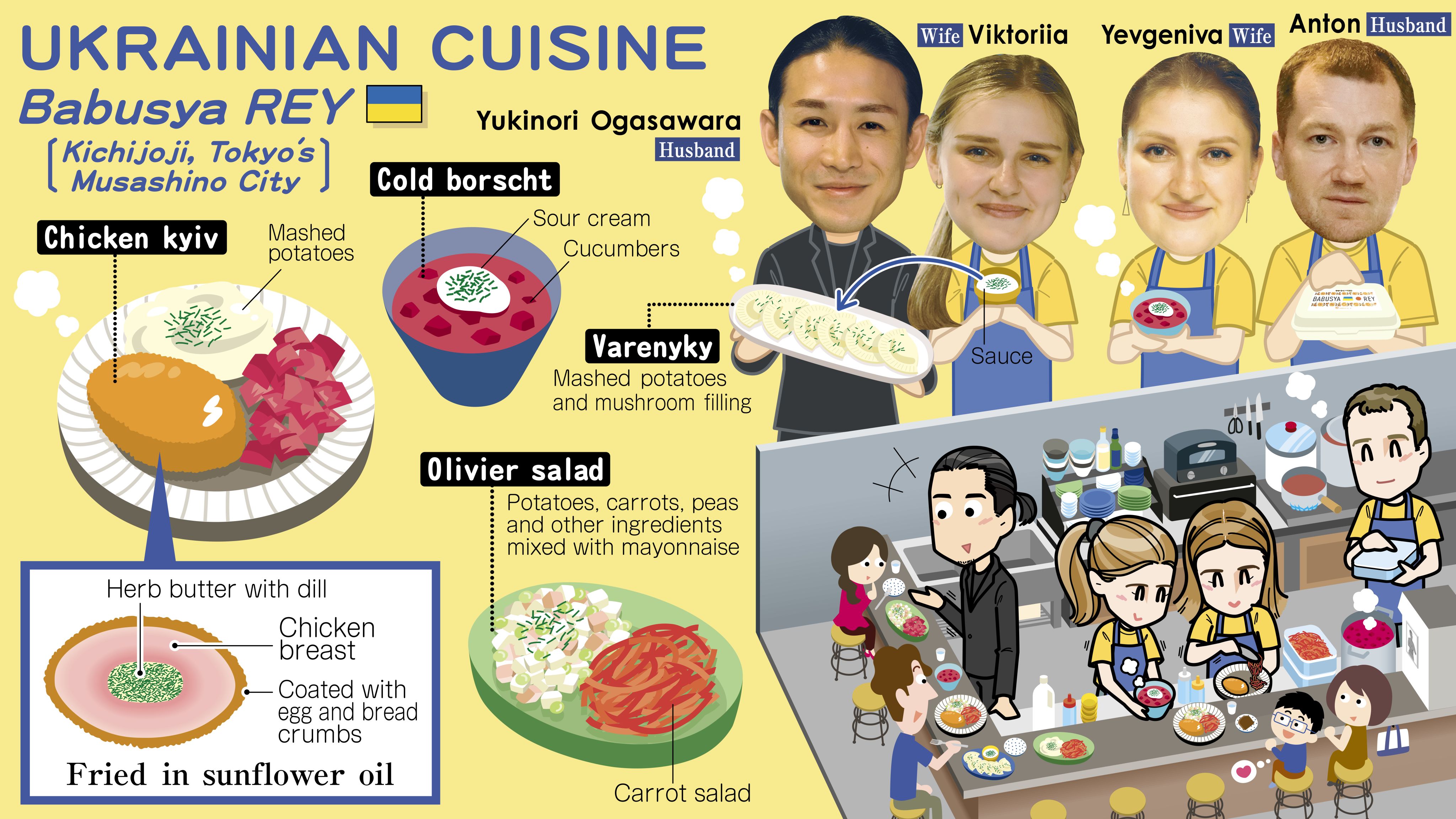
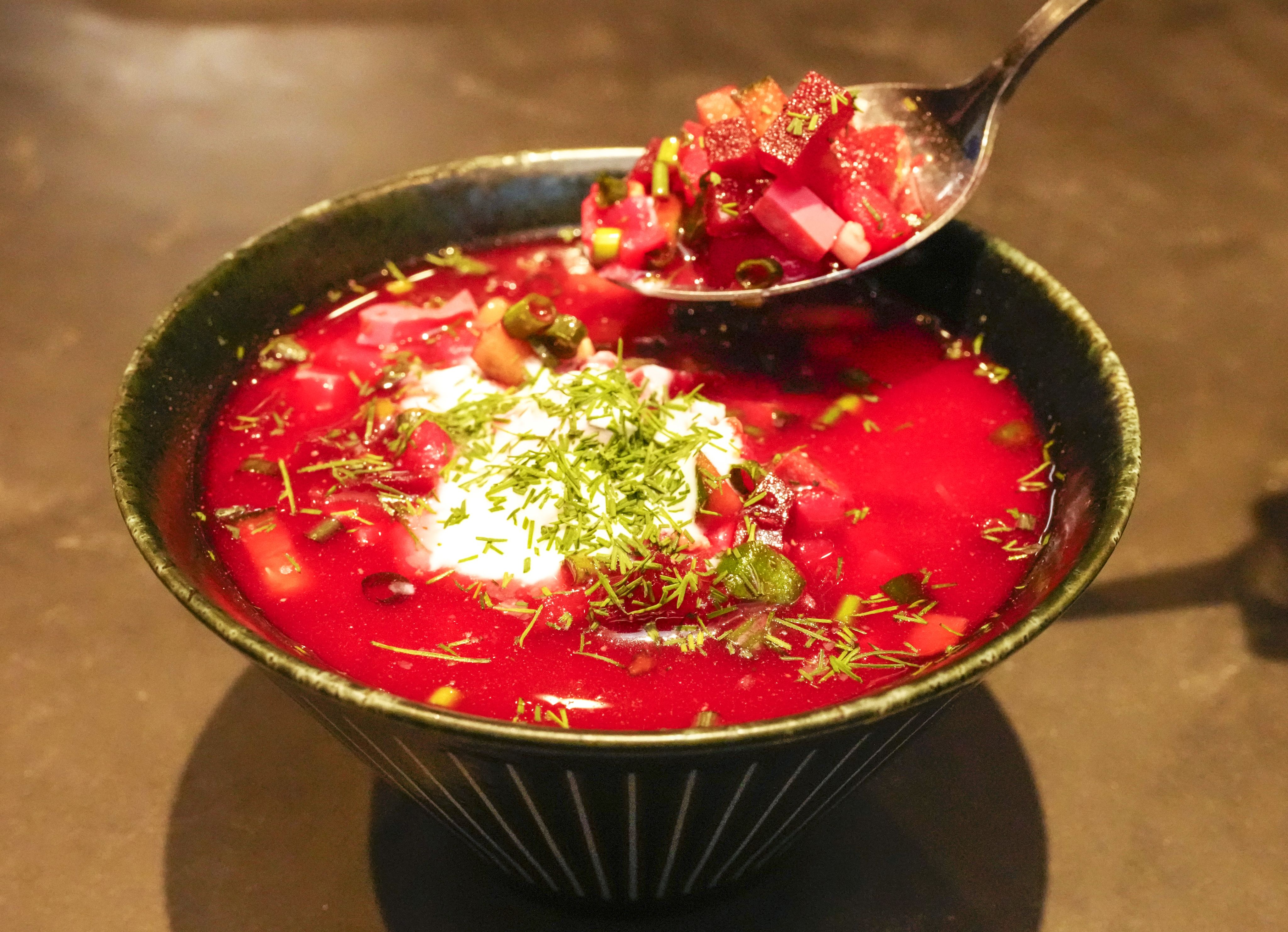
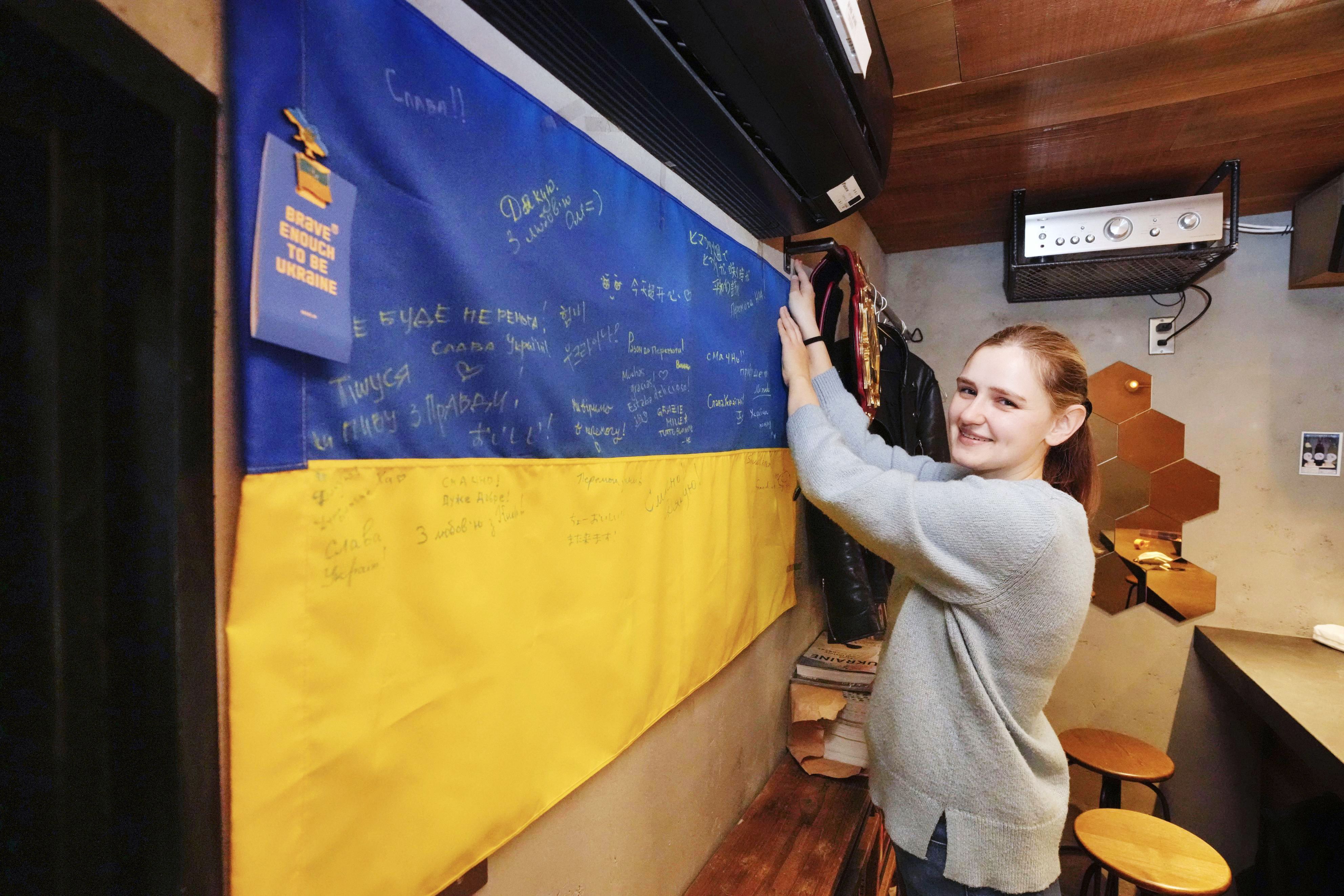
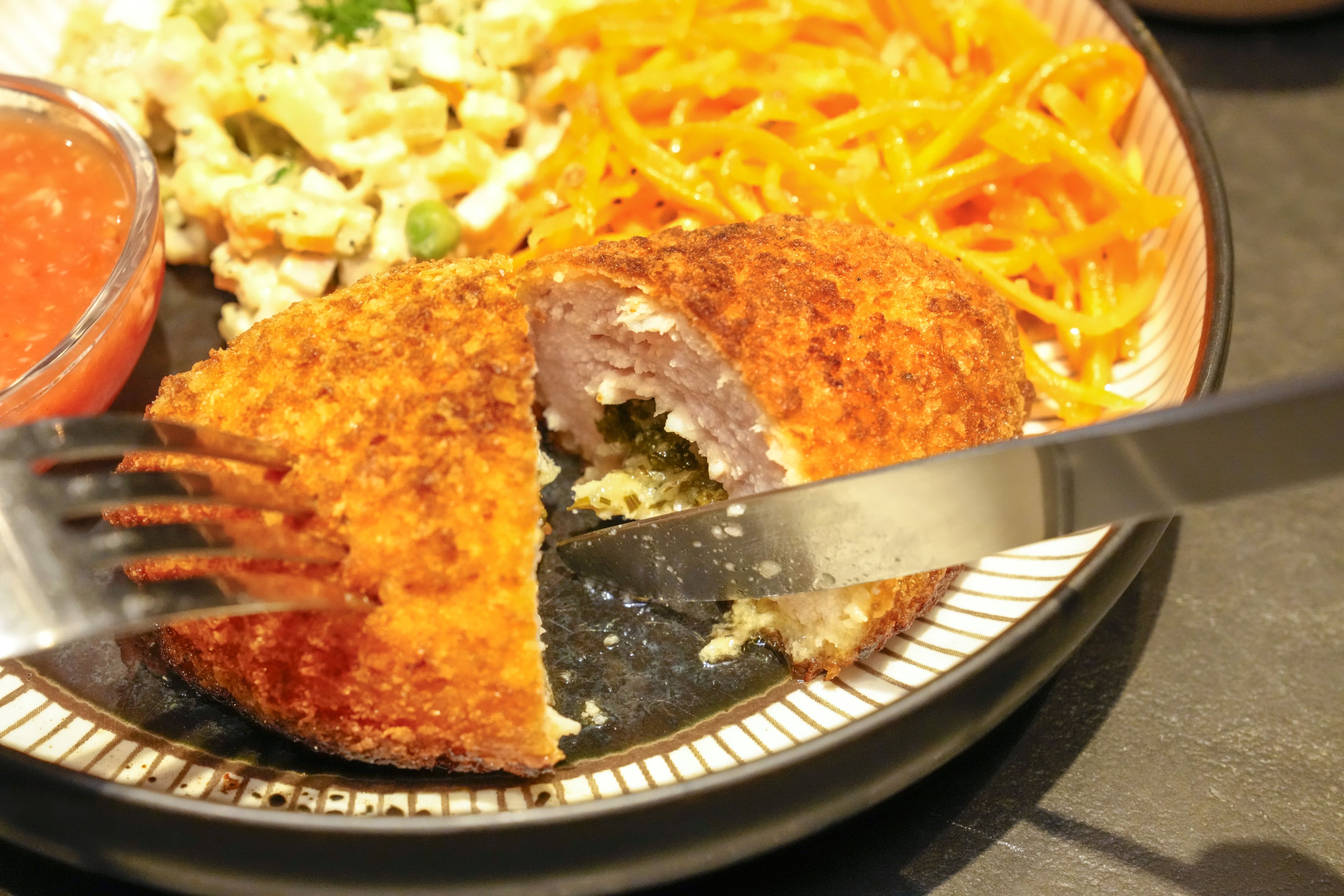

Stepping into Babusya Rey in Kichijoji in the west Tokyo city of Musashino, customers are greeted by the bright smiles of owner Yukinori Ogasawara and his wife Viktoriia. Working alongside the couple are Viktoriia's parents, as well as her sister and brother-in-law who evacuated from Ukraine to Japan in the spring of 2022.
The food at Babusya Rey, which opens only on weekends and national holidays, is prepared by the whole family. For example, Viktoriia's father is in charge of dicing the ham and vegetables for the Olivier salad while her mother prepares the ingredients for the chicken kyiv. Viktoriia and her older sister Yevgeniva take charge of the frying.
"We pound the chicken breast meat to 5 millimeters thick and wrap it around frozen herb butter," Viktoriia explains as she demonstrates how to prepare the chicken. "Then we coat it with egg, flour and breadcrumbs a few times, and it's ready to be fried."
"Everything is made at home by the family from Donetsk. Even the varenyky dumplings are made from scratch, starting with the dough," says Yukinori. "Viktoriia's parents make their rounds to the butchers and grocers on their bicycles to buy the ingredients, and they make the dishes for customers the same way as they would when cooking for family."
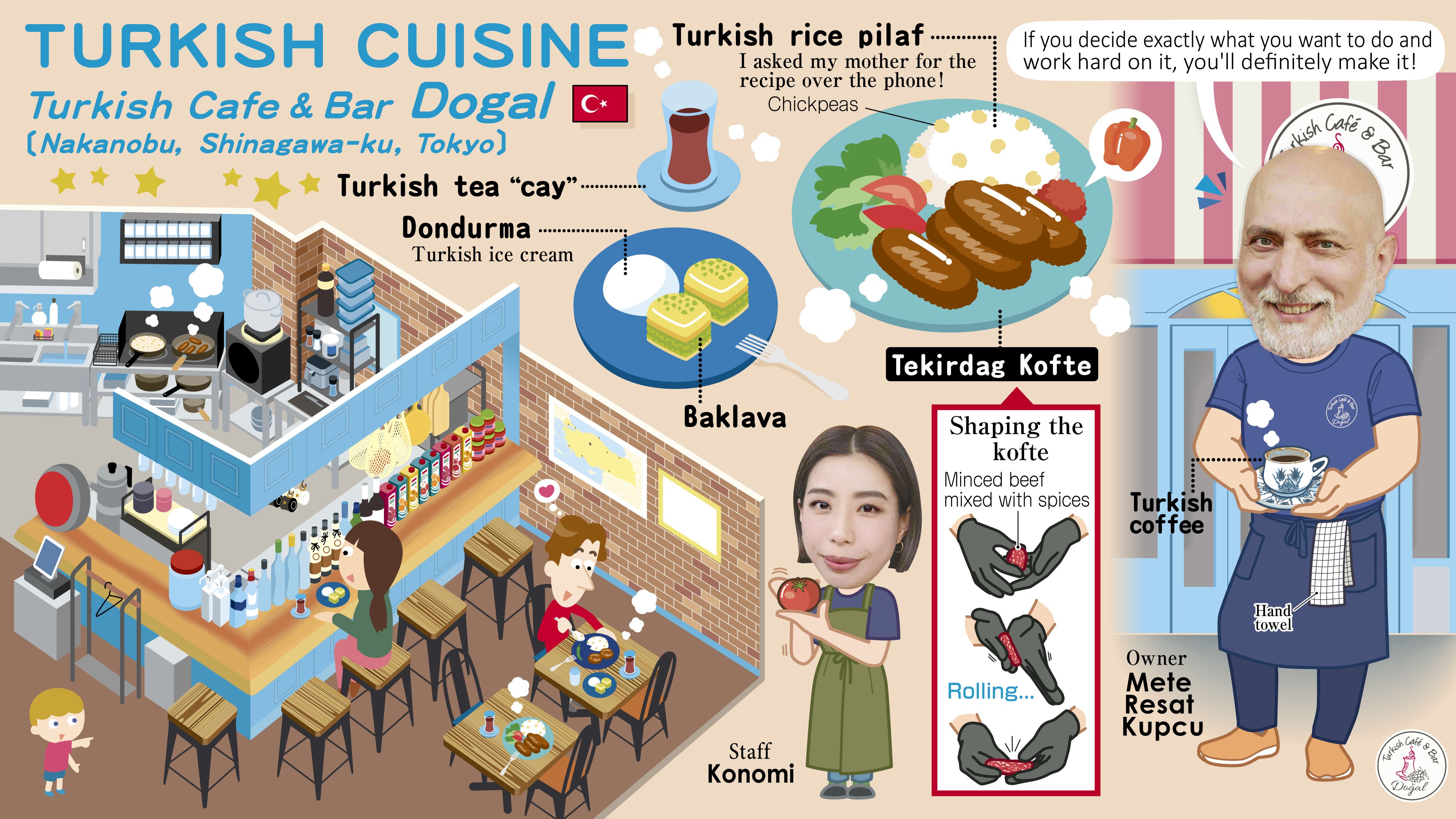
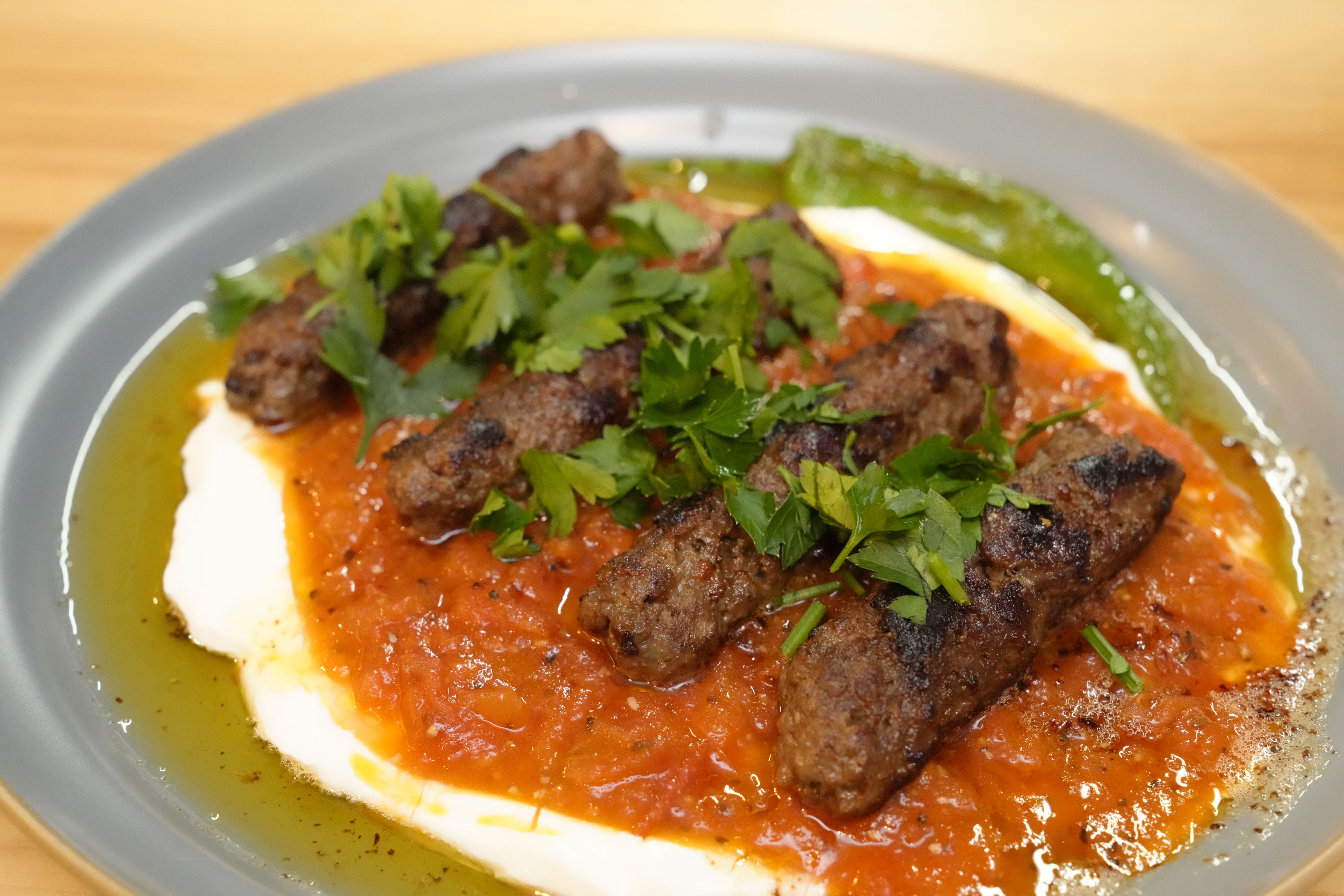
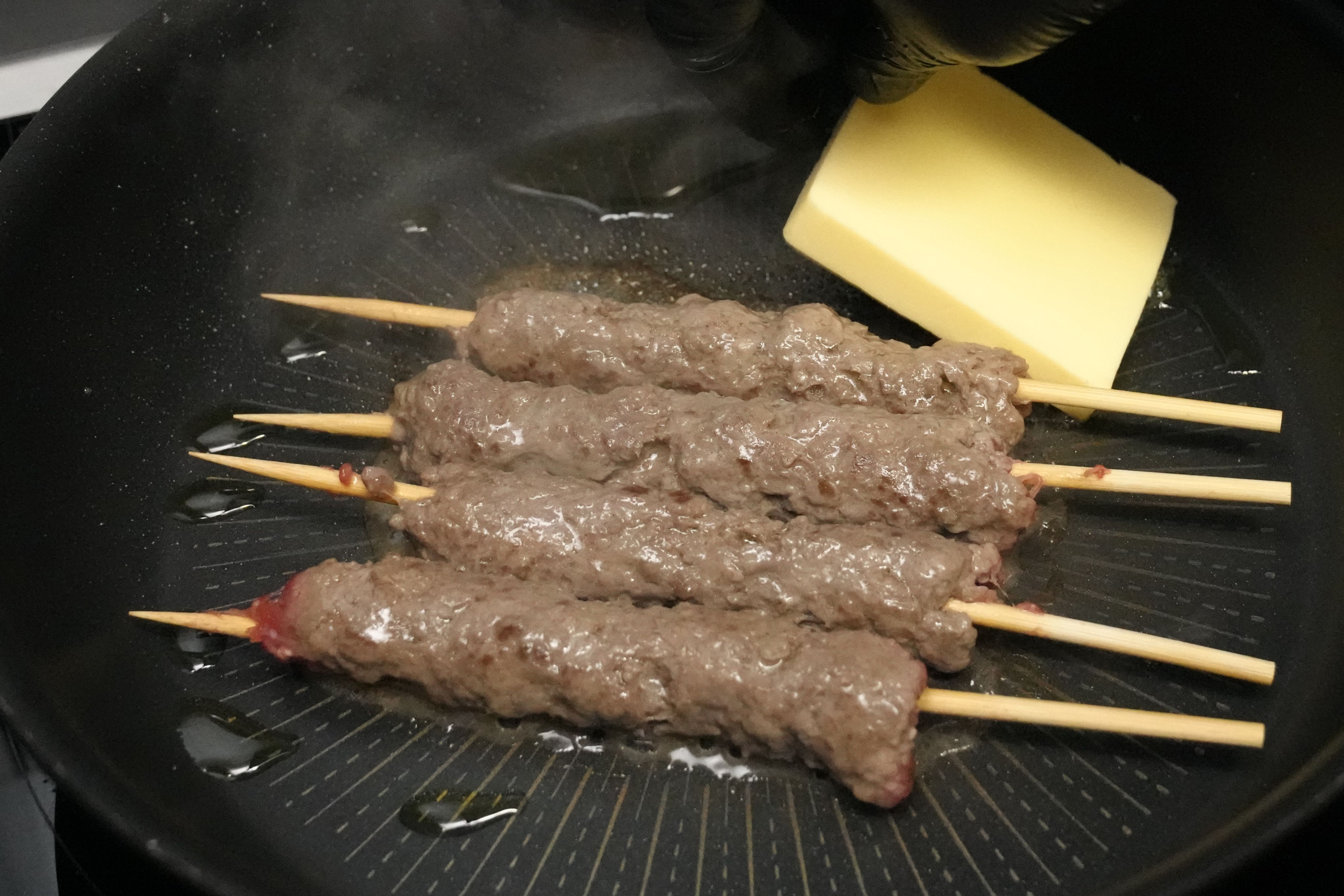
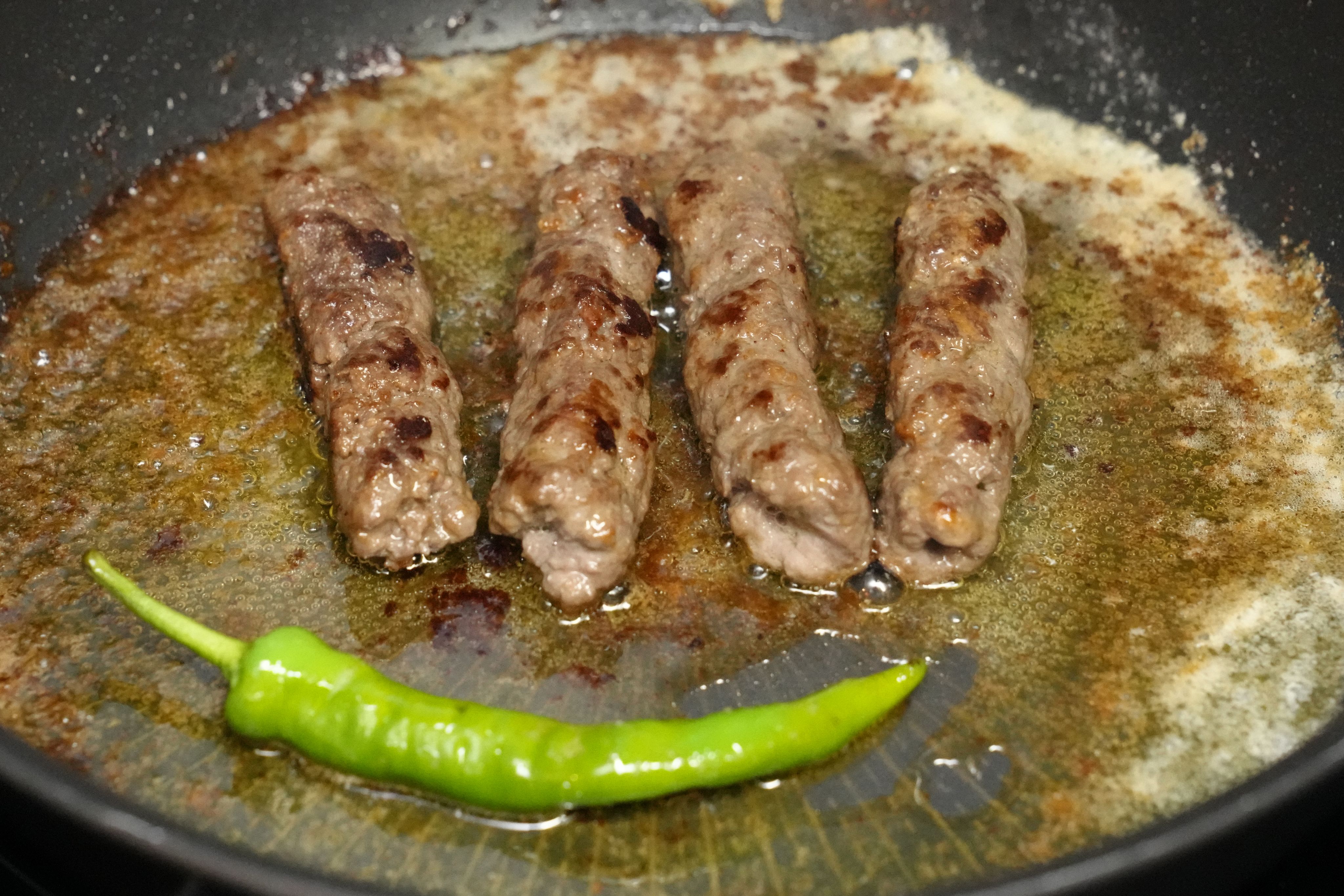
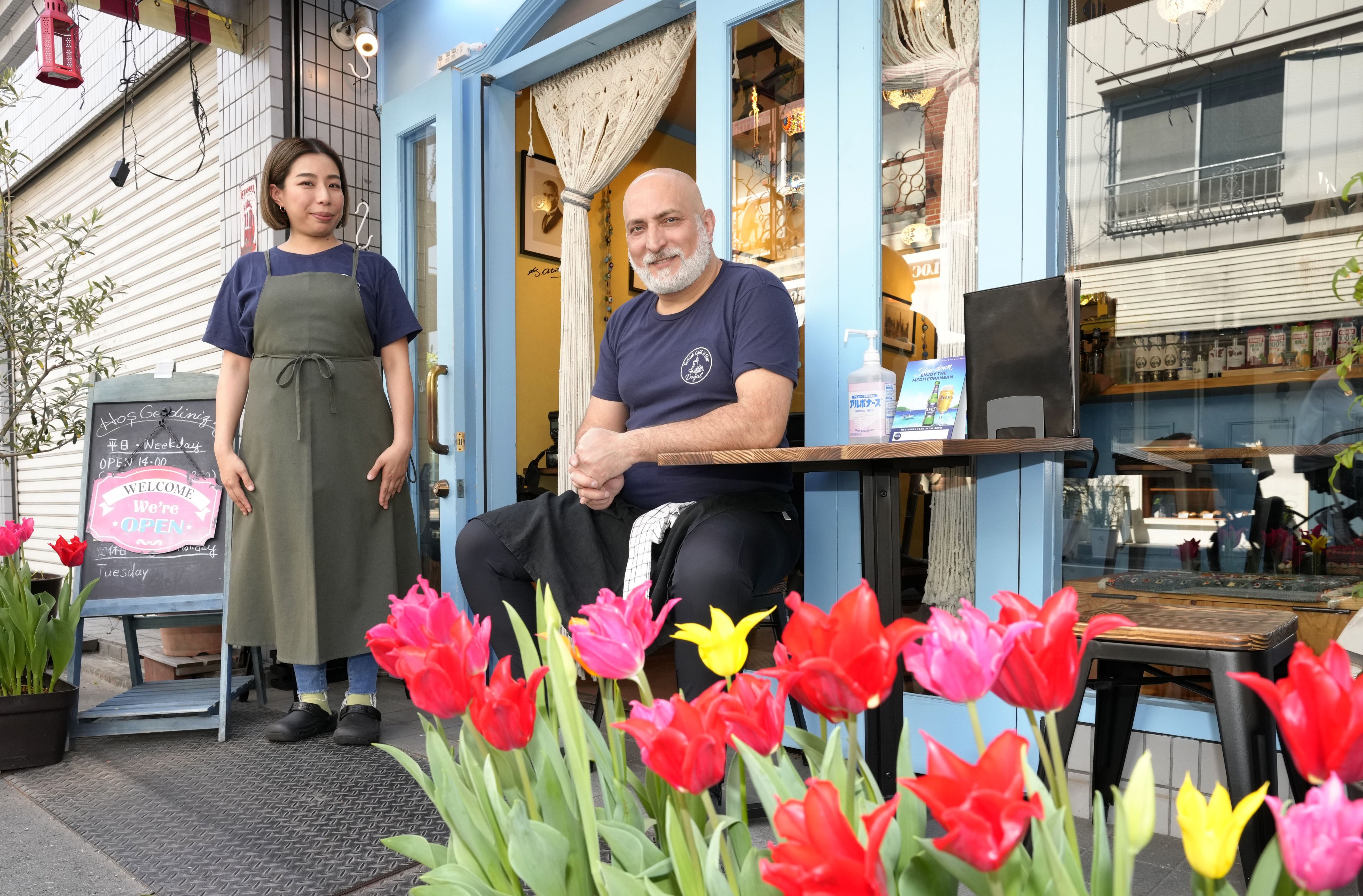
It is 9:30 a.m. and owner chef Mete Resat Kupcu is already busy preparing for the day in the kitchen at Turkish Cafe & Bar Dogal in Shinagawa district's Nakanobu.
At Dogal, Turkish meatballs known as kofte that Kupcu makes are a popular choice. He grinds the beef in a meat mincer and kneads until it becomes sticky. As he kneads, Kupcu sometimes gives the meat a punch. "That's to get the air out," he says.
"Kofte comes in different shapes and tastes depending on the region, such as the Tekirdag region, the Inegol region, and so on," says Kupcu, who himself hails from Niksar in northern Turkey.
The kofte at Dogal is served in an elongated cylinder form of the Tire region. It is pan-fried in butter and eaten with yogurt and tomato sauce.
Kupcu is also busy coming up with new dishes to add to the menu. "First, I make it and see how everyone reacts after they try it. Then I contemplate what is missing and find my taste as I adapt the recipe with my own touches."
Positive feedback and advice from restaurant staff member Konomi Miyakawa is also indispensable -- not just on the taste but also the amount of meat, how it is served, what vegetables to go with it and the color of the utensils. For Kupcu and Miyakawa, their constant goal is to come up with new ideas to enable customers to enjoy their food.
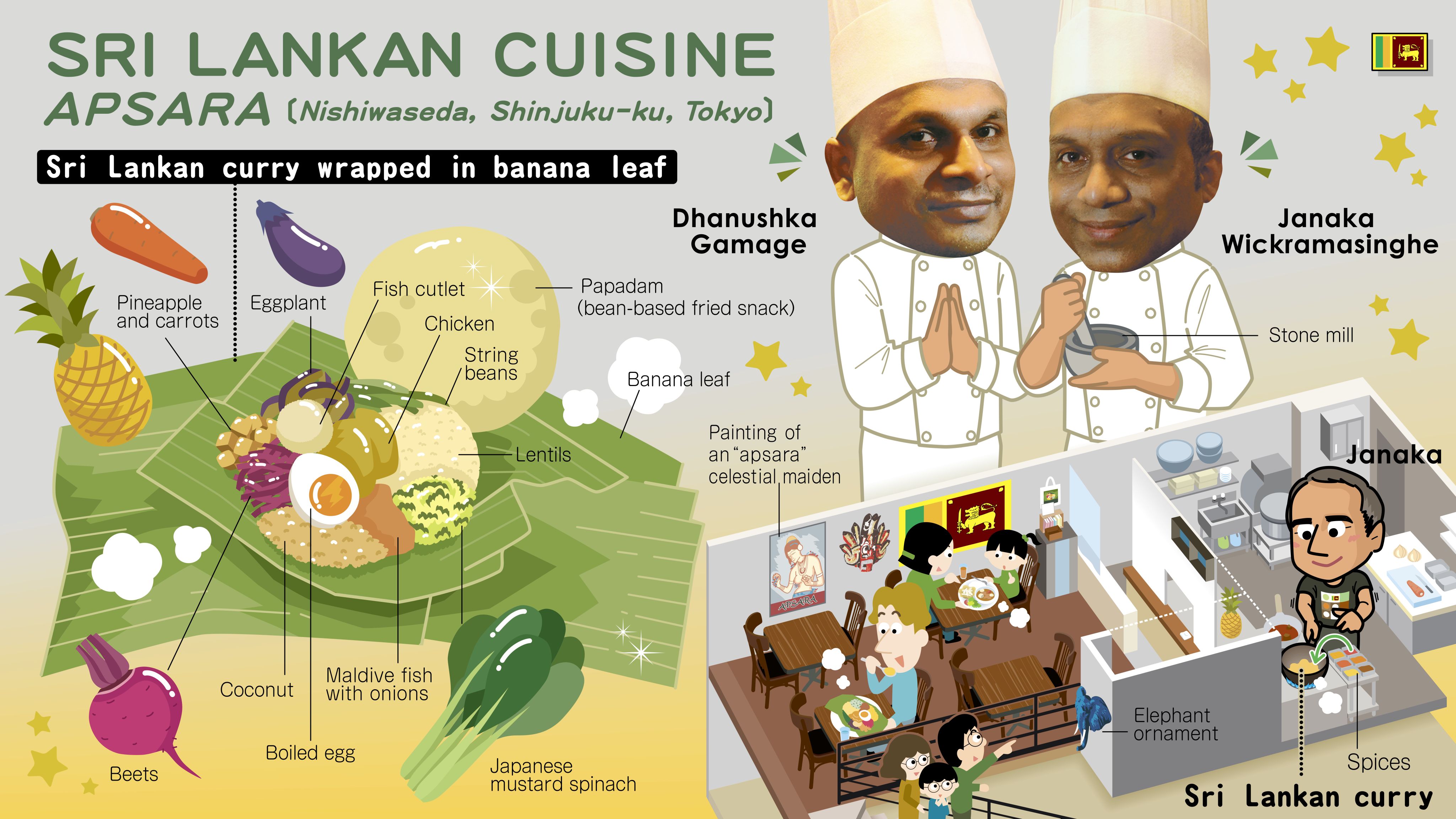



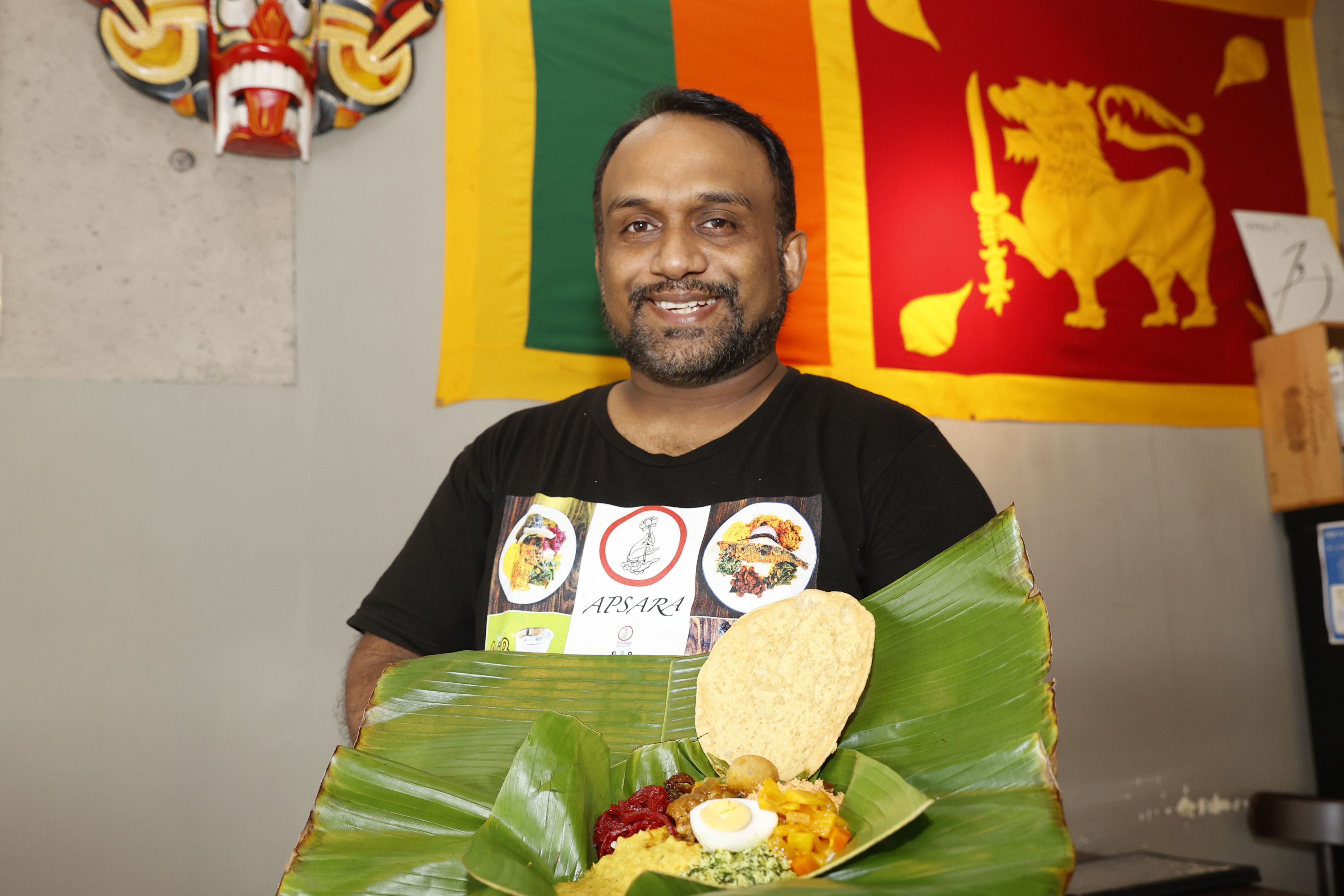
"We pick our vegetables, fish and meat fresh from the market every morning," Janaka Wickramasinghe, chef at Sri Lankan restaurant Apsara in Shinjuku district's Nishiwaseda, says with a smile. "And the beets are from Ibaraki and Nagano."
One of the restaurant's signature dishes features Sri Lankan curry, chicken, beets, pineapple, eggplant and fried fish cakes all wrapped in a large banana leaf.
Wickramasinghe was born and raised in the country's ancient capital of Kandy, but came to Japan after falling in love with Japanese cuisine when working as a chef at a hotel in Sri Lanka.
After gaining experience in Japanese cooking at a restaurant in Tokyo's posh Ginza area and in Italian cuisine at a restaurant in the trendy Ebisu area, Wickramasinghe decided to open his own restaurant in 2017 with his friend Dhanushka Gamage to serve their home country's cuisine, the preparation of which he is most skilled.
"Come enjoy our Sri Lankan curry. We also ship nationwide."
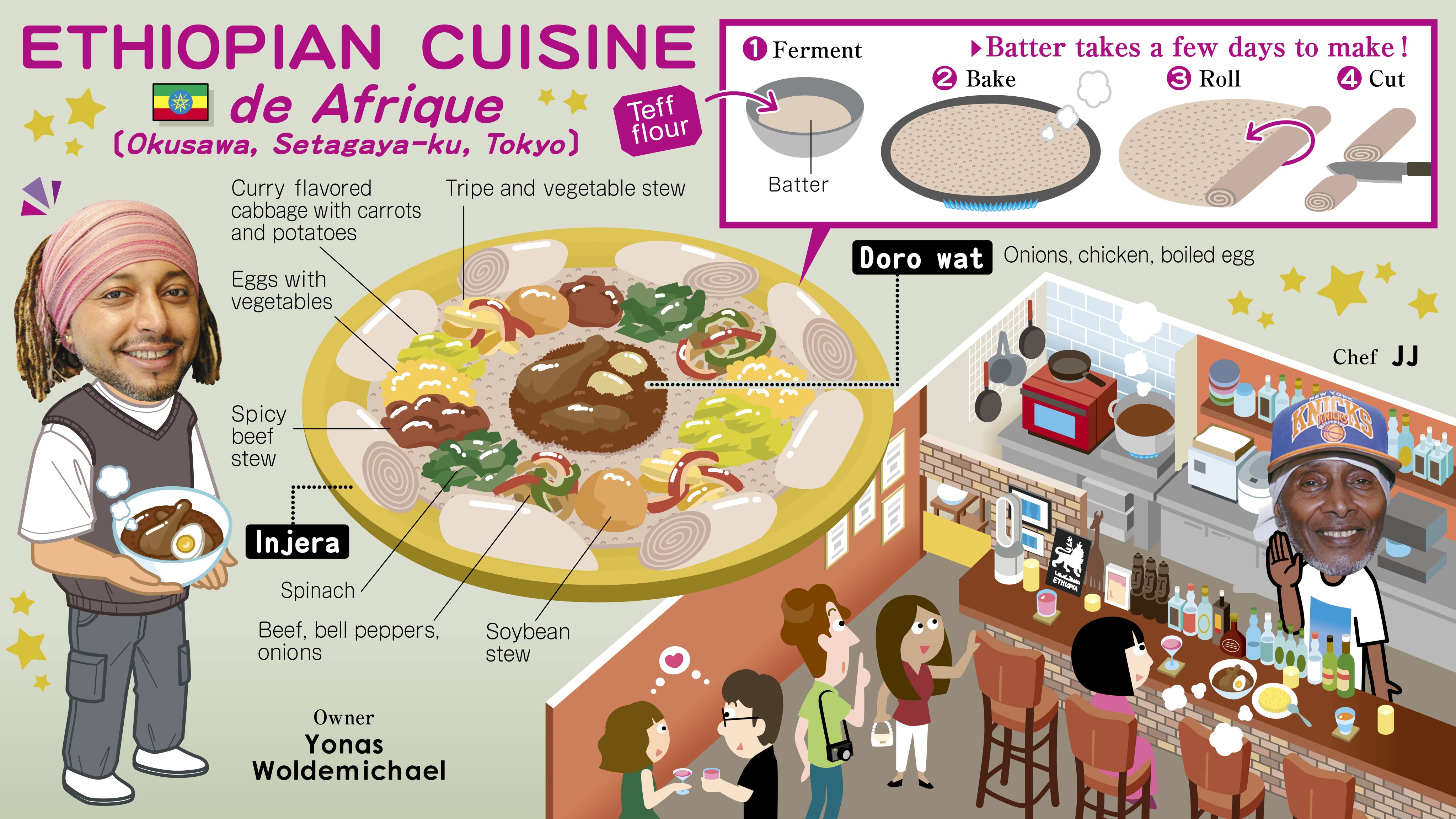
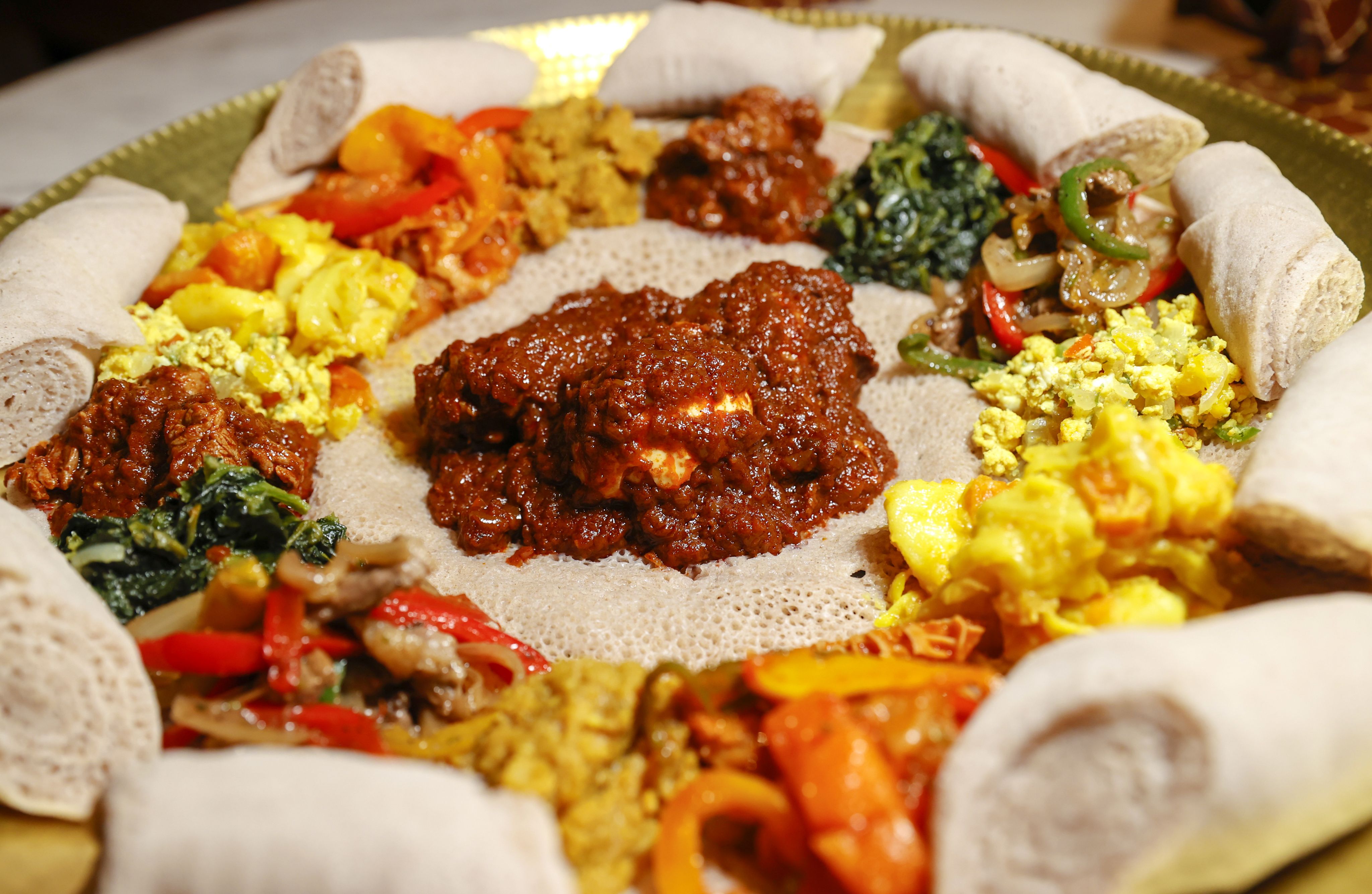
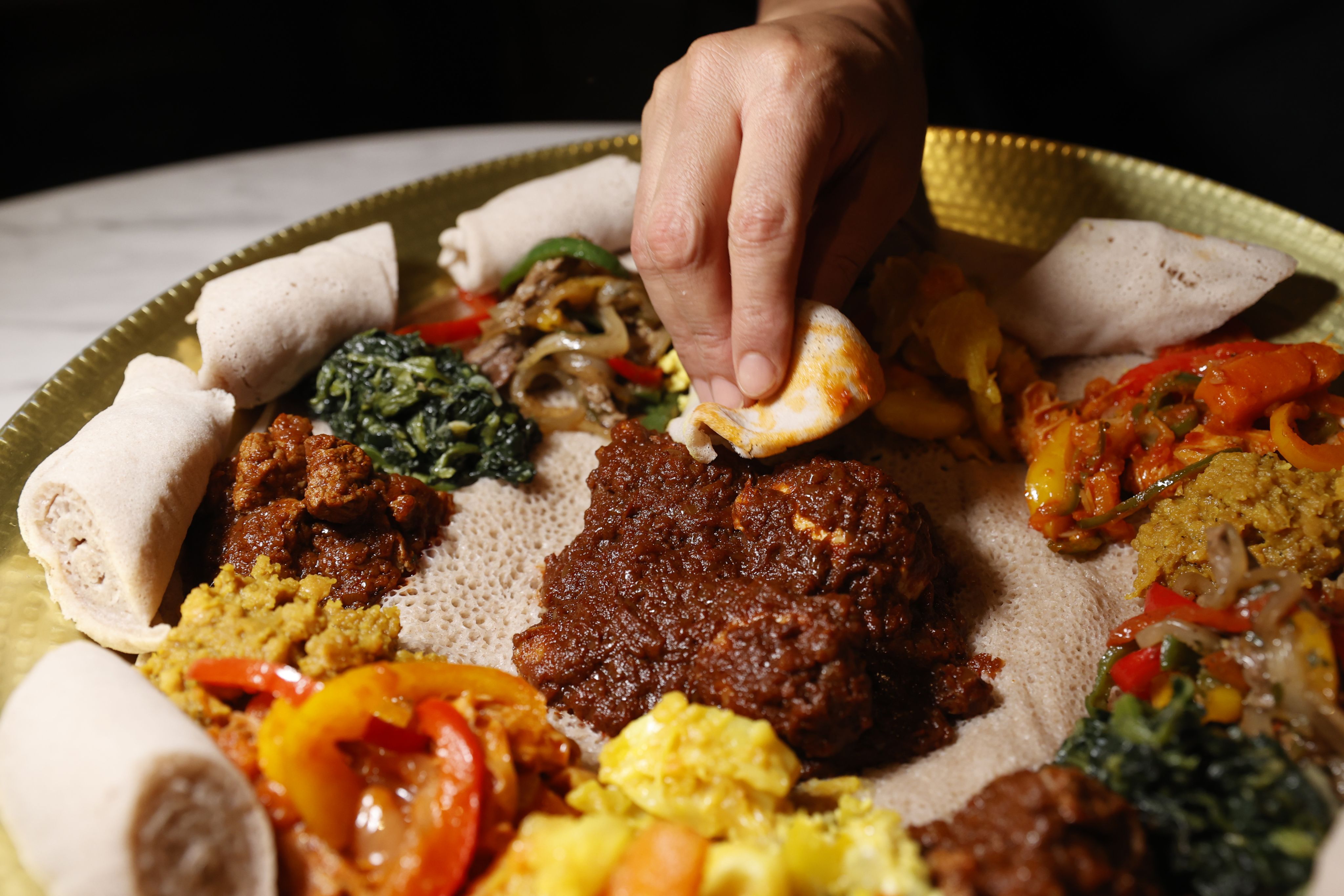
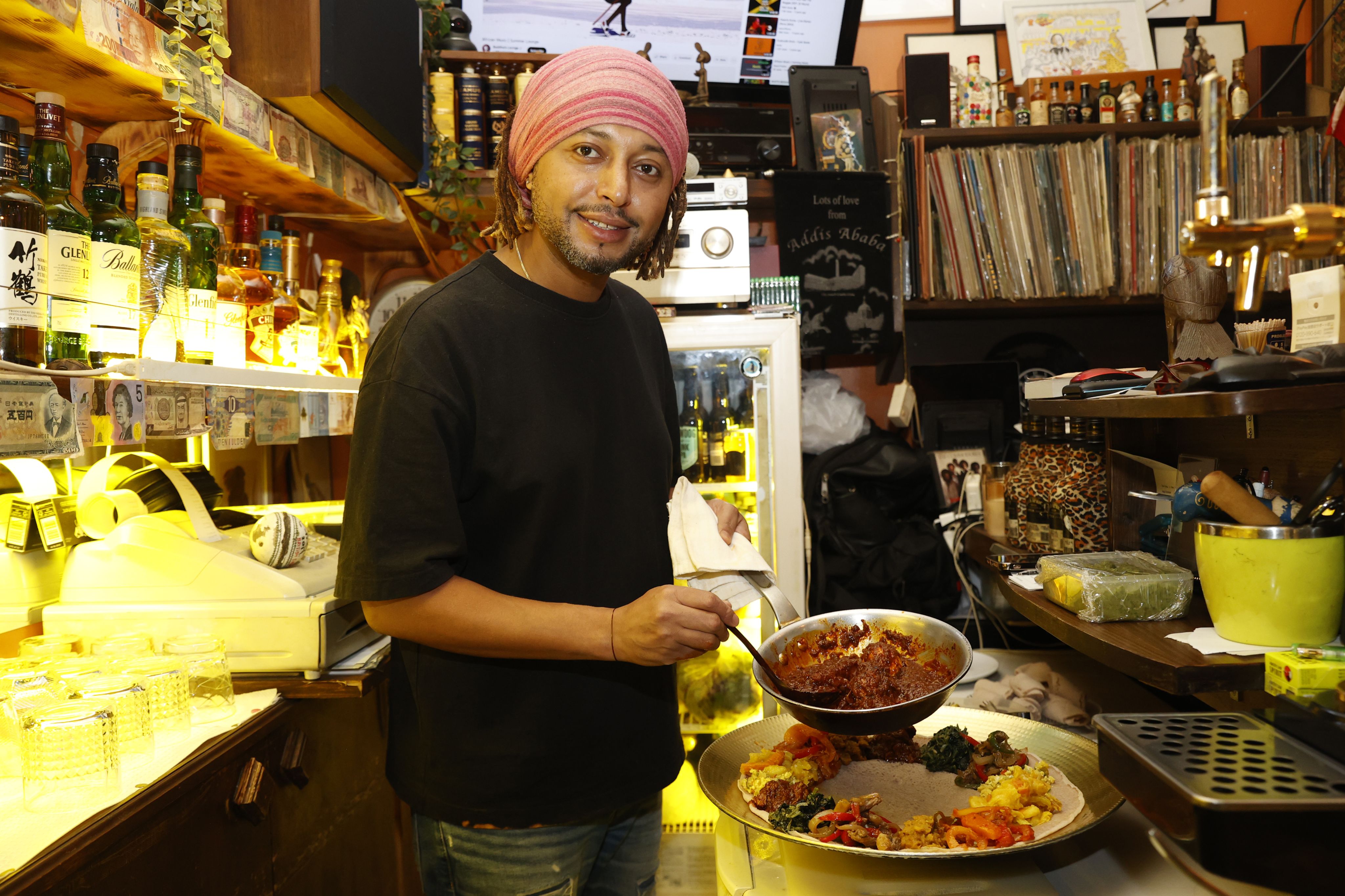
At restaurant De Afrique in Setagaya area's Okusawa, Yonas Woldemichael puts the finishing touches to a traditional Ethiopian dish comprising of injera, a pancake-like flatbread with a slightly spongy texture of about 50 centimeters in diameter, and various colorful toppings known as wat.
"(Injera) is made from fermented sourdough made of teff flour," says Ethiopia-born Woldemichael, as he rolls up a second piece of injera, cuts it into four pieces and places them apart from each other on the plate. "To eat it, you unroll the injera and wrap the wat of your choice with it."
In Ethiopia, it is also common custom for family and friends eating together to feed each other by placing a morsel of wat and injera into the other's mouth by hand.
Project Director : Kunio Hiramoto
Illustration Editor : Kanji Ono
Line Producer : Yuki Murayama
Photos : Fumine Tsutabayashi,
Sadayuki Goto
Text,lllustration&Animation : Tomoko Goto
Translation : Janice Tang
Copy Editing : Joel Fitzpatrick
Special Thanks :
Cuban Sandwich & Deli AHIMANA
Samarkand Terrace
Soul Food House
Diner Vàng
Bistrot Quatre Avril
Babusya REY
Turkish Cafe & Bar Dogal
APSARA
de Afrique
Other visual stories

Rooftop honey bee hives have northeastern Japan city hall buzzing
The rooftop of the Tomiya City Hall in Miyagi Prefecture in northeastern Japan is constantly abuzz. Not with residents complaining about taxes, but instead, with honey bees.
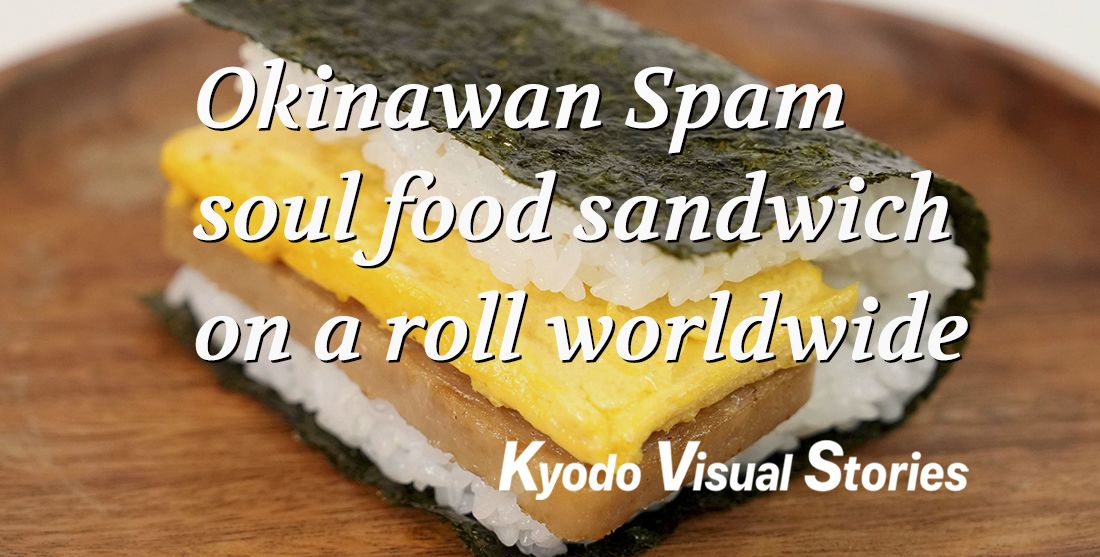
Okinawan Spam soul food sandwich on a roll worldwide
The success of a Japanese man who took an "onigiri" rice ball sandwich known for years as the soul food of Okinawa and turned it into a booming franchise began when his wife cooked the pork and fried egg snack for him one morning at home.

Night factory tours provide history lesson of Japan's modern economy
Hundreds of lights emit an ethereal glow while a flame billows from a slender chimney that towers over a refinery, warming a group of tourists who have come to see the collection of factories that dot Kawasaki, a large industrial seaside city near Tokyers over a refinery, warming a group of tourists who have come to see the collection of factories that dot Kawasaki, a large industrial seaside city near Tokyo.

The First Slam Dunk - Craze across Asia
"The First Slam Dunk," a Japanese animation film based on the popular basketball manga Slam Dunk, has proved to be a box office hit across Asia. We explore the background to the enthusiasm among Asians for the movie that has transcended time.
The Company uses Google Analytics, an access analysis tool provided by Google. Google Analytics uses cookies to track use of the Service. (Client ID / IP address / Viewing page URL / Referrer / Device type / Operating system / Browser type / Language /Screen resolution) Users can prevent Google Analytics, as used by the Company, from tracking their use of the Service by downloading and installing the Google Analytics opt-out add-on provided by Google, and changing the add-on settings on their browser. (https://tools.google.com/dlpage/gaoptout) For more information about how Google handles collected data: Google Analytics Terms of Service (https://policies.google.com/technologies/cookies?hl=en#types-of-cookies) Google Privacy & Terms(https://policies.google.com/privacy)
© Kyodo News. All Rights Reserved. No reproduction or republication without written permission.

